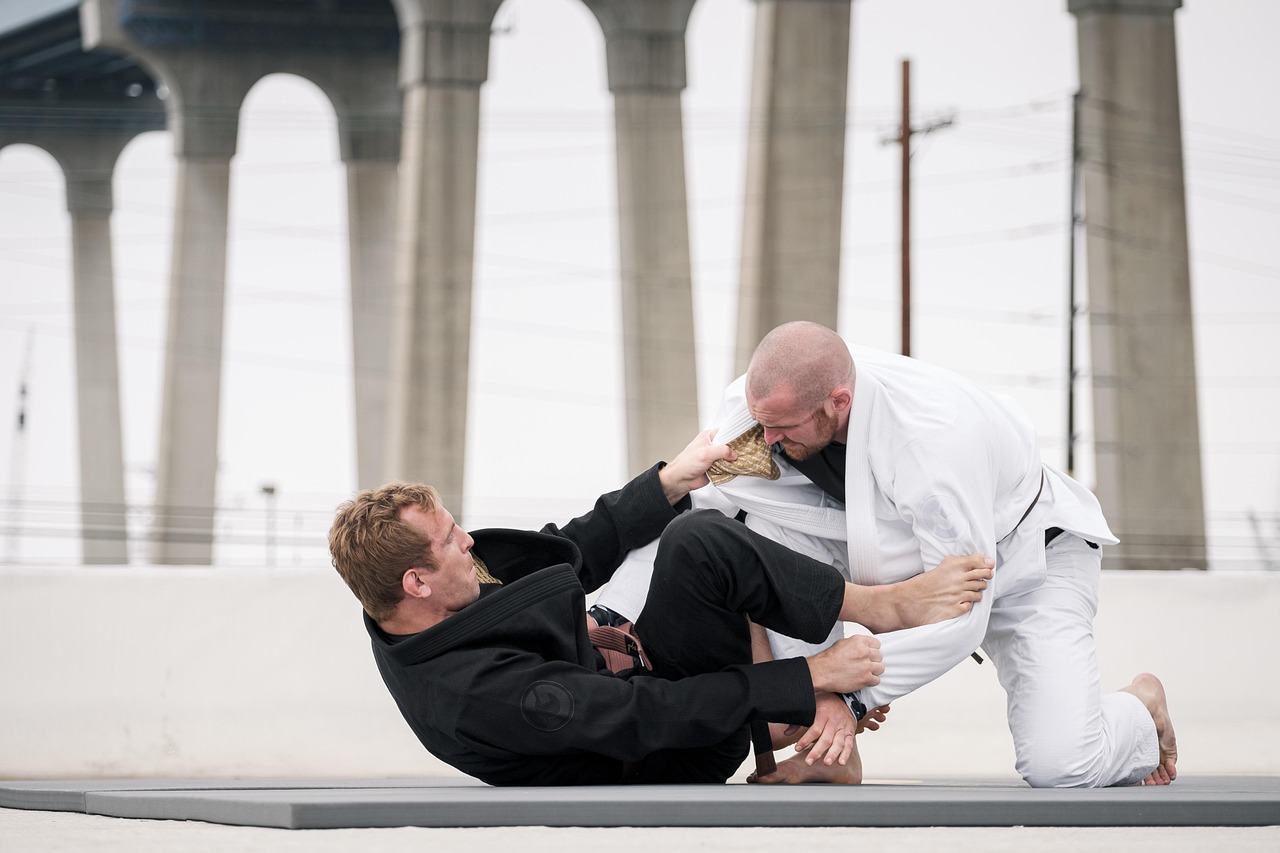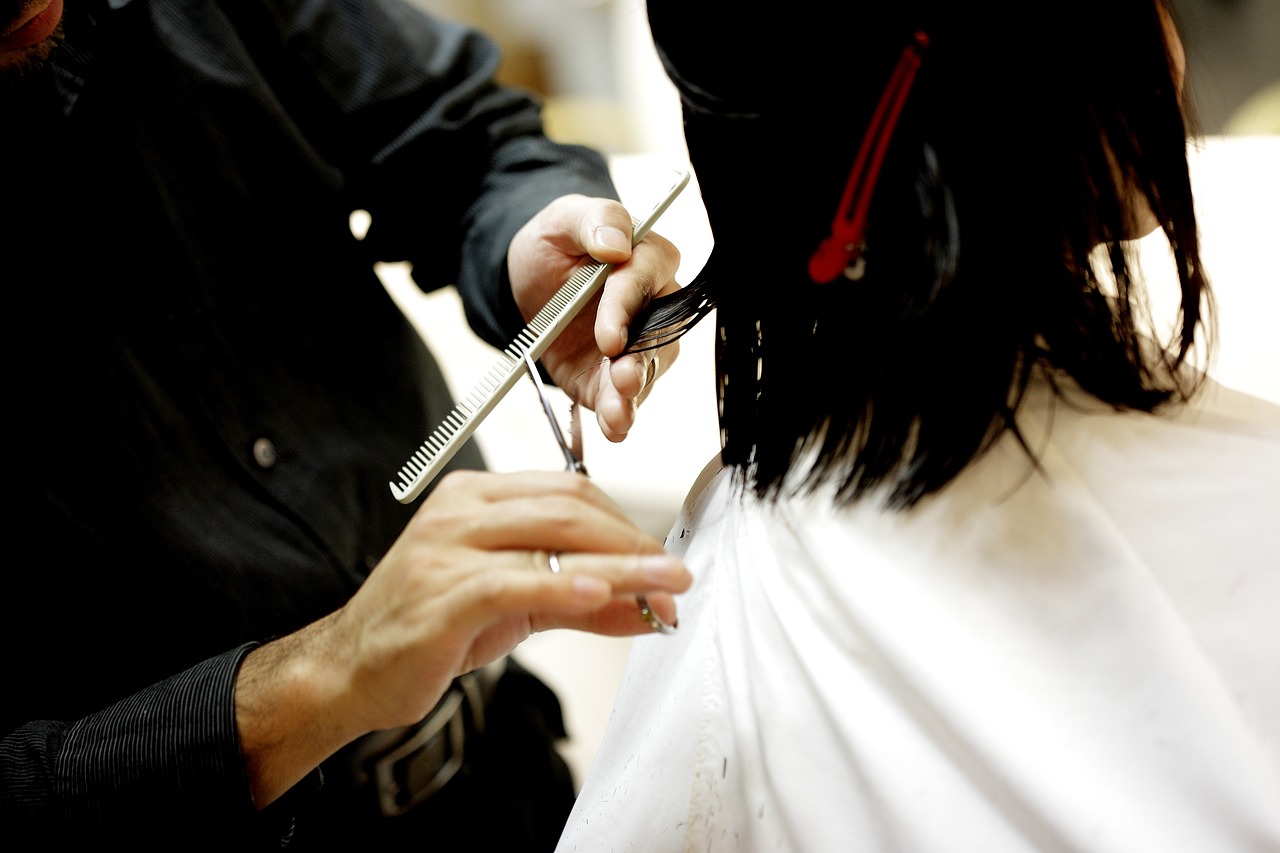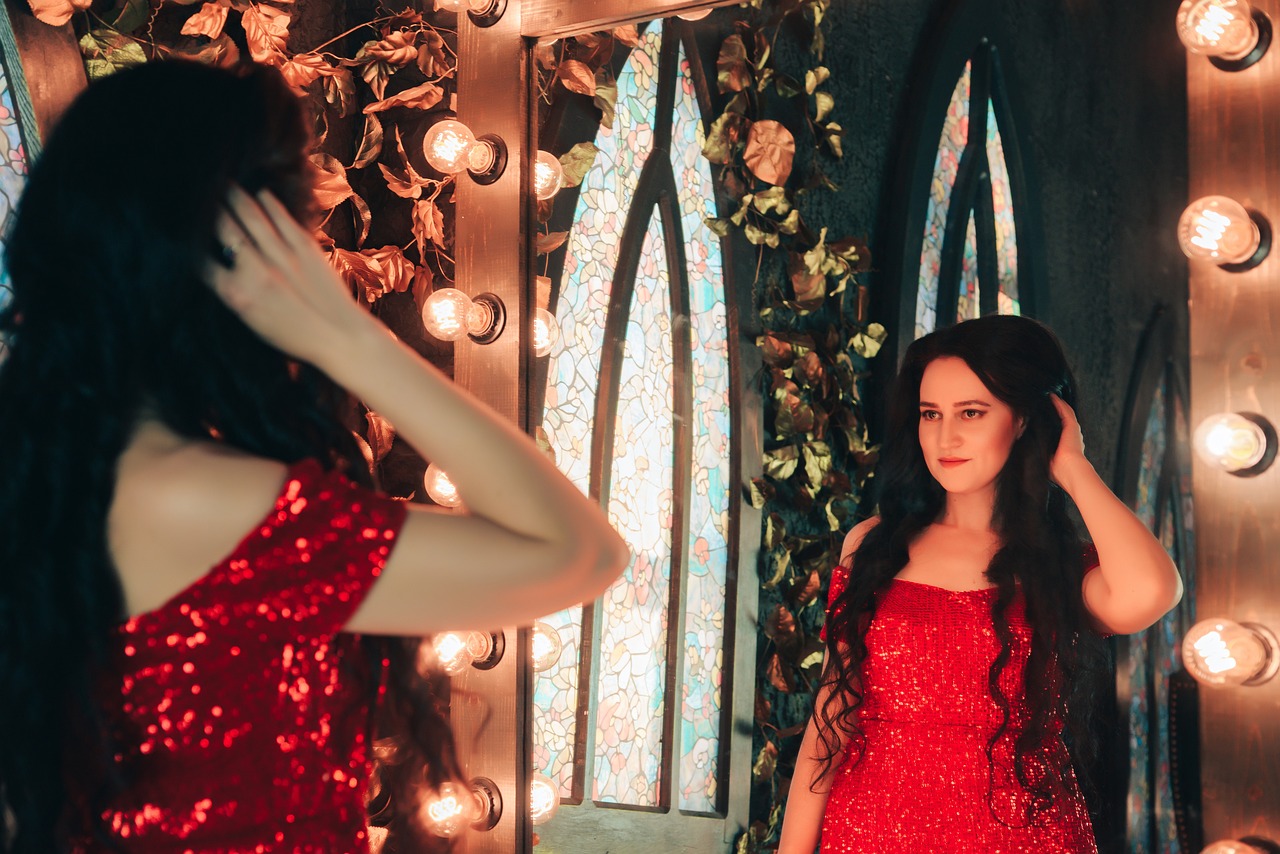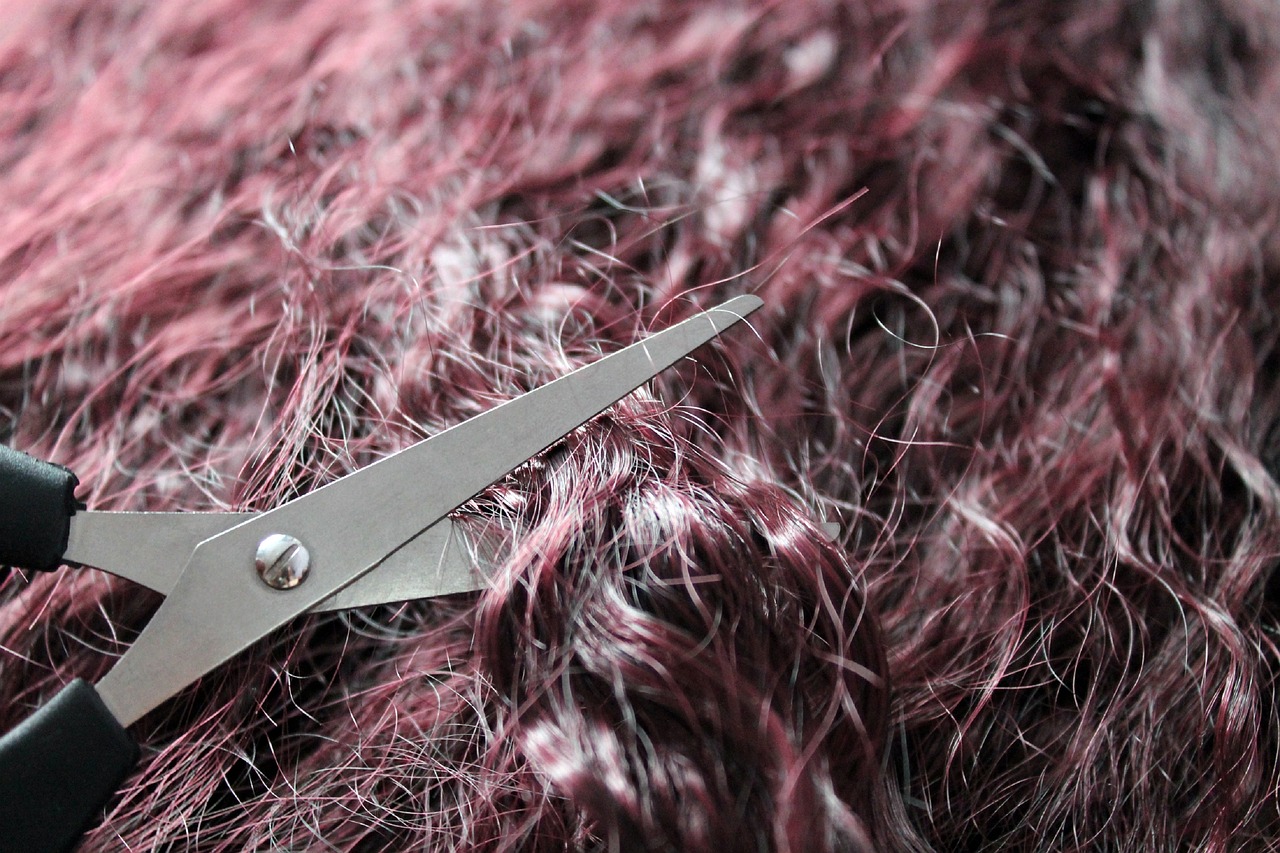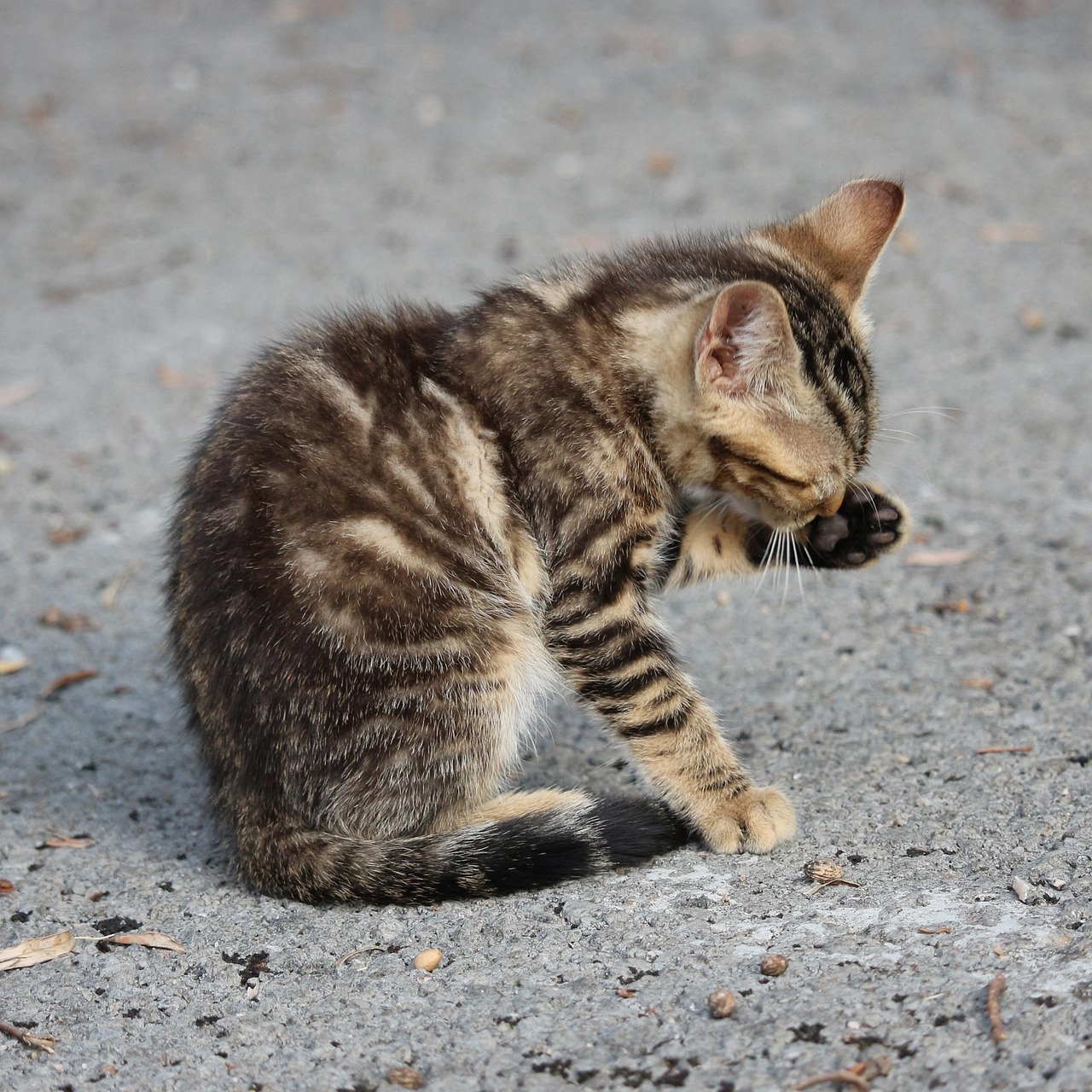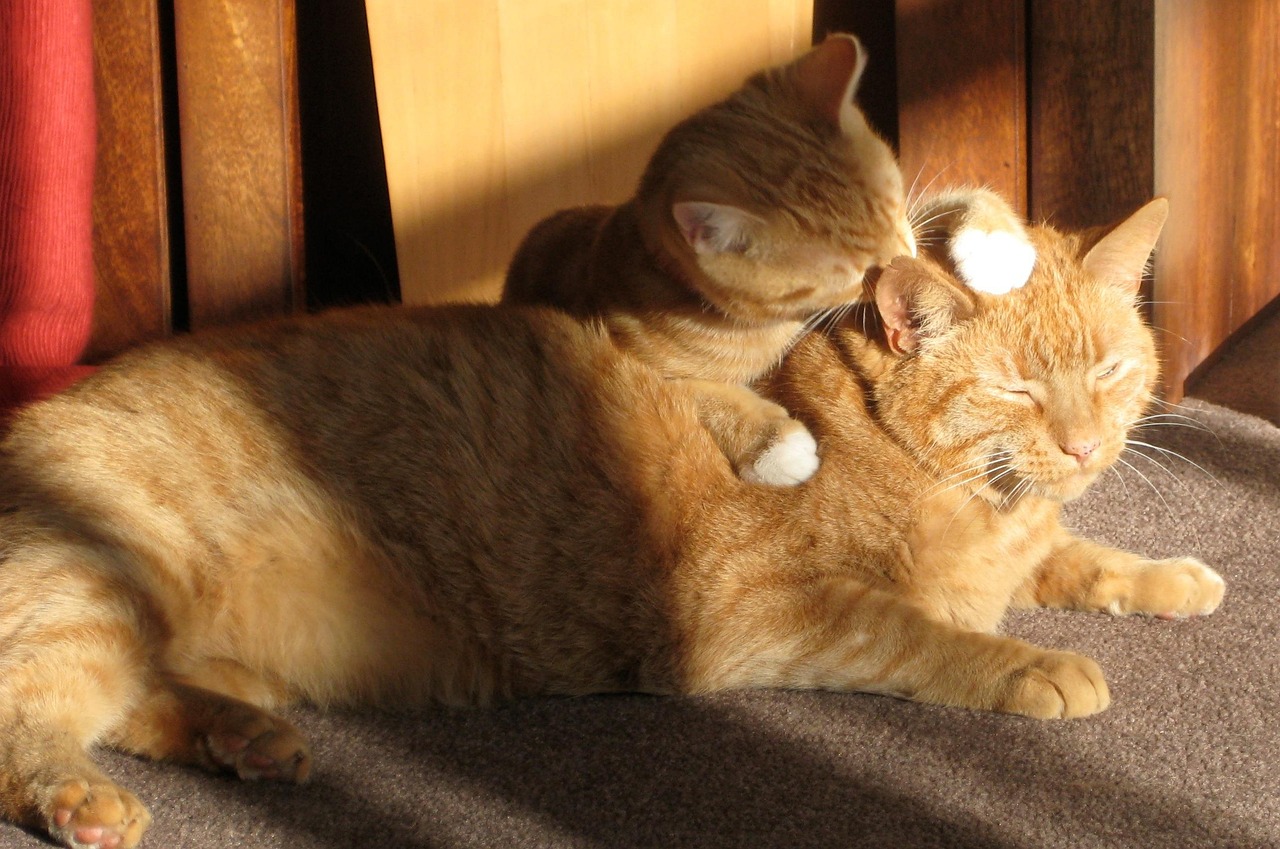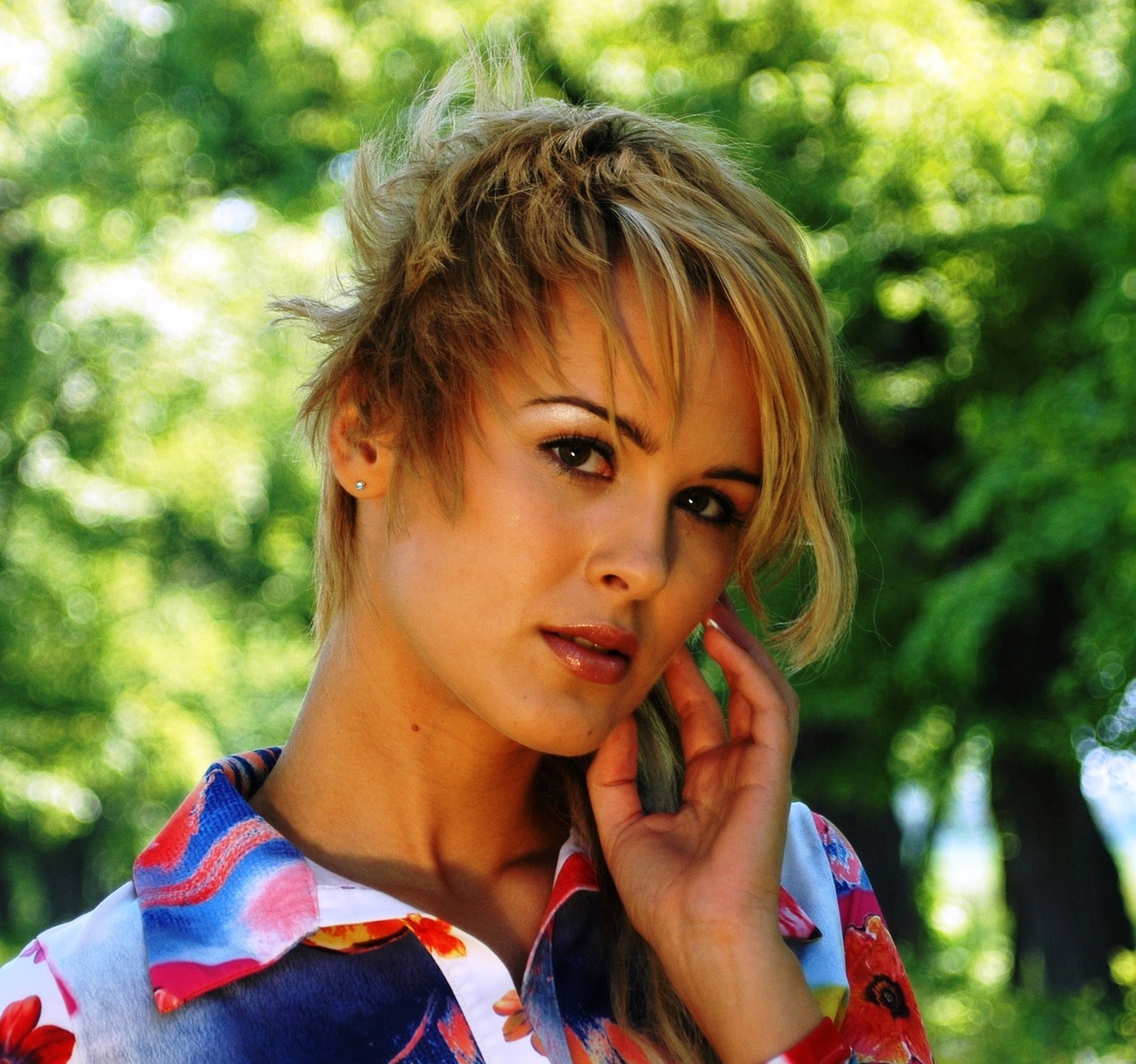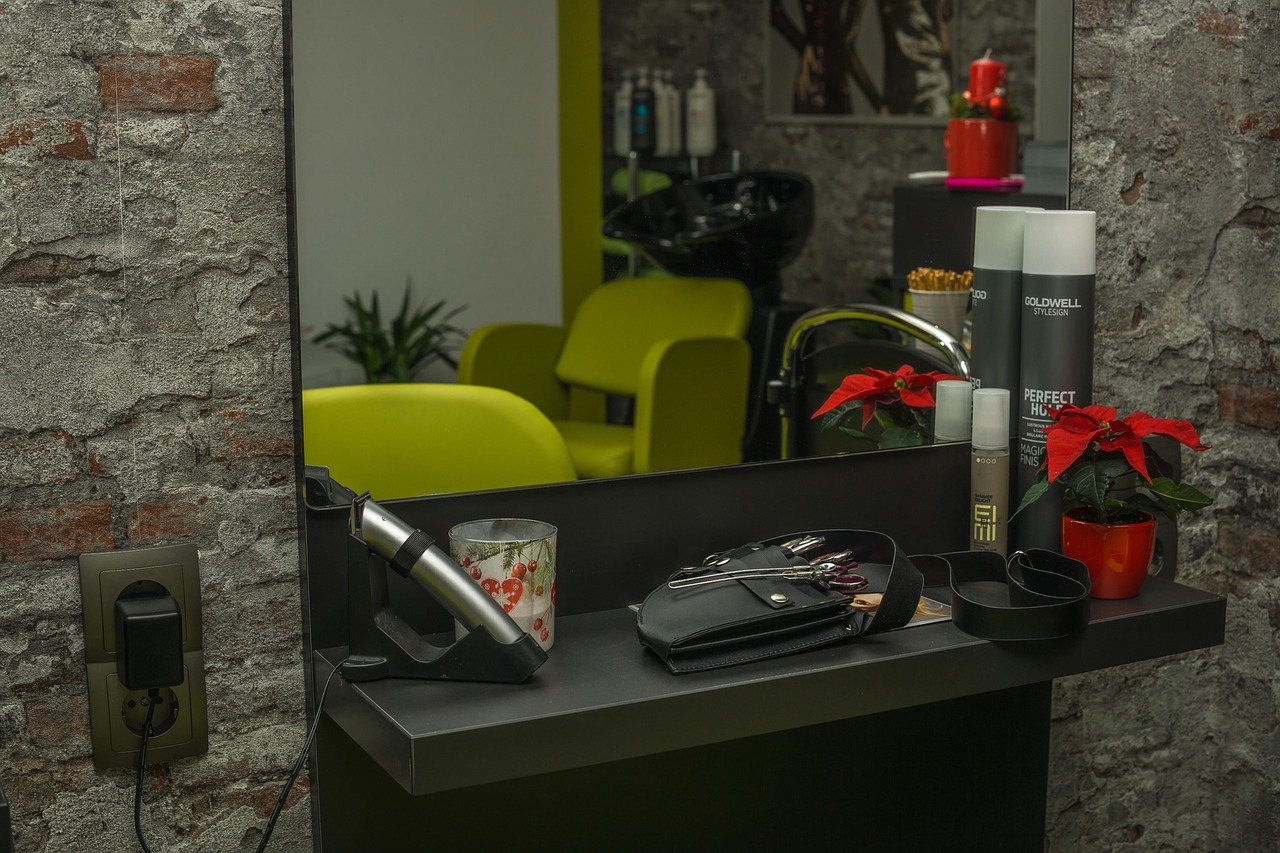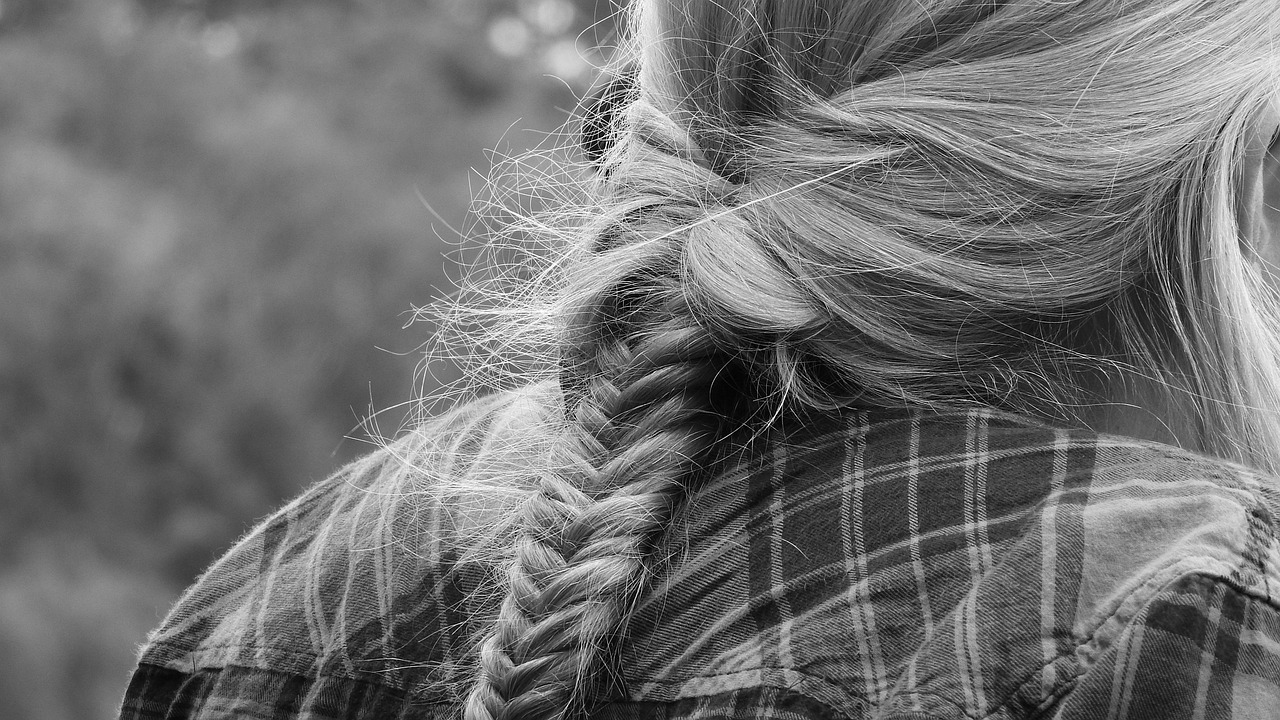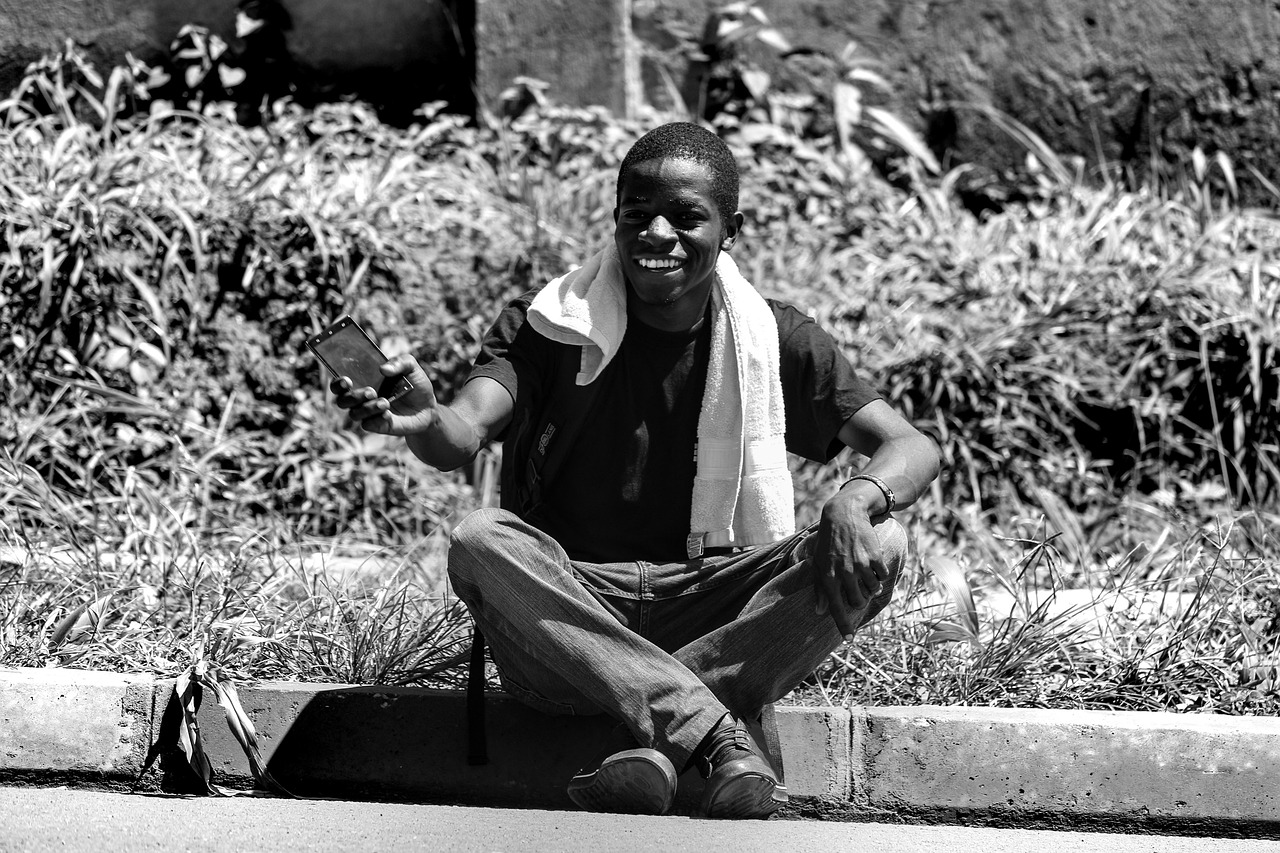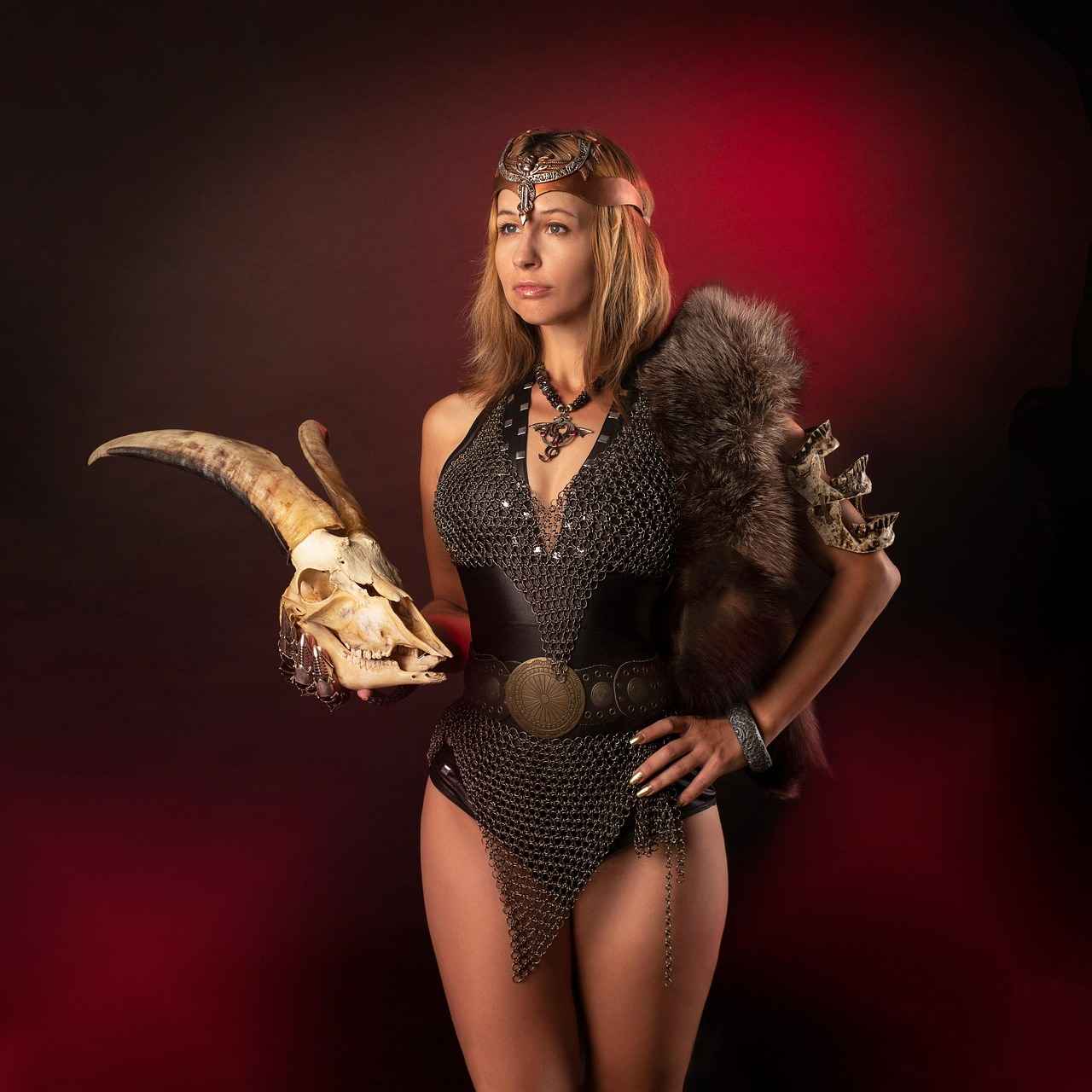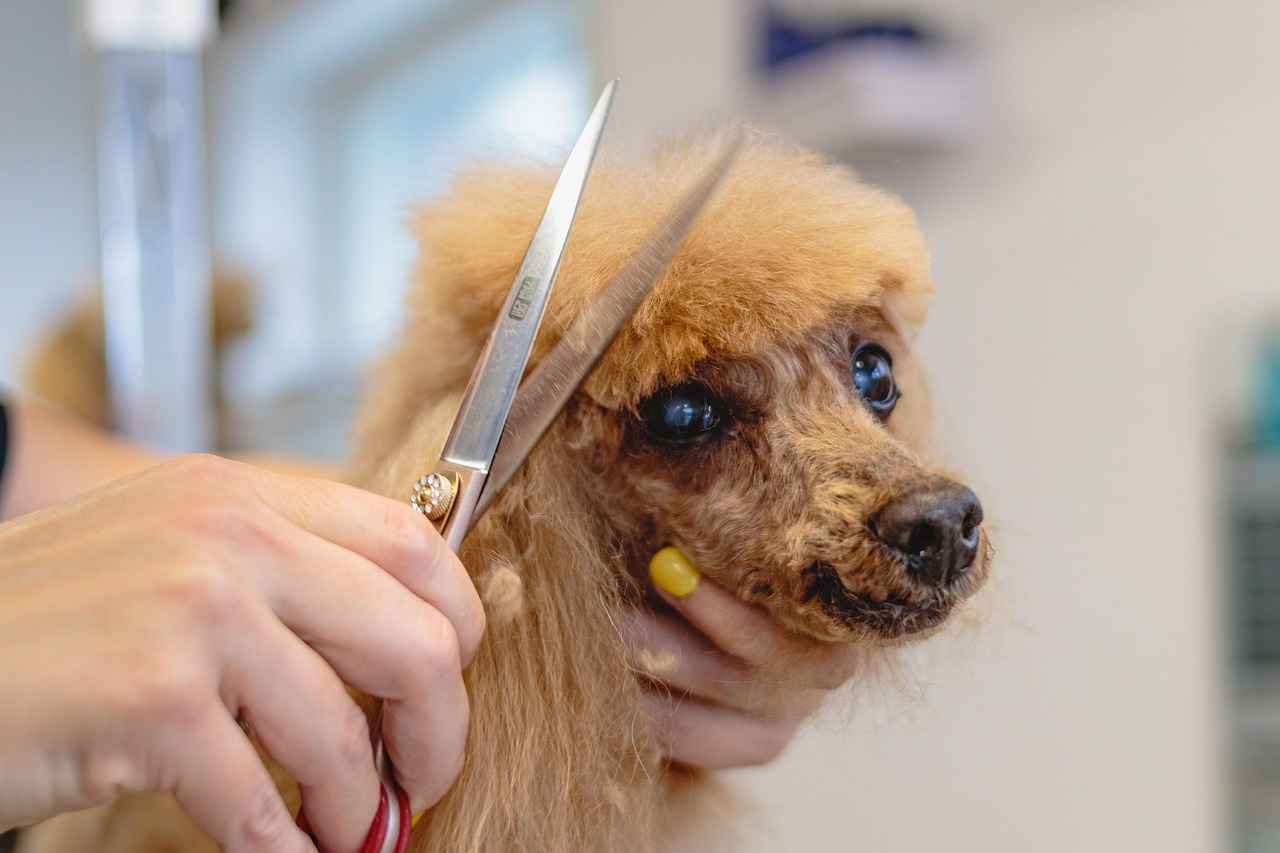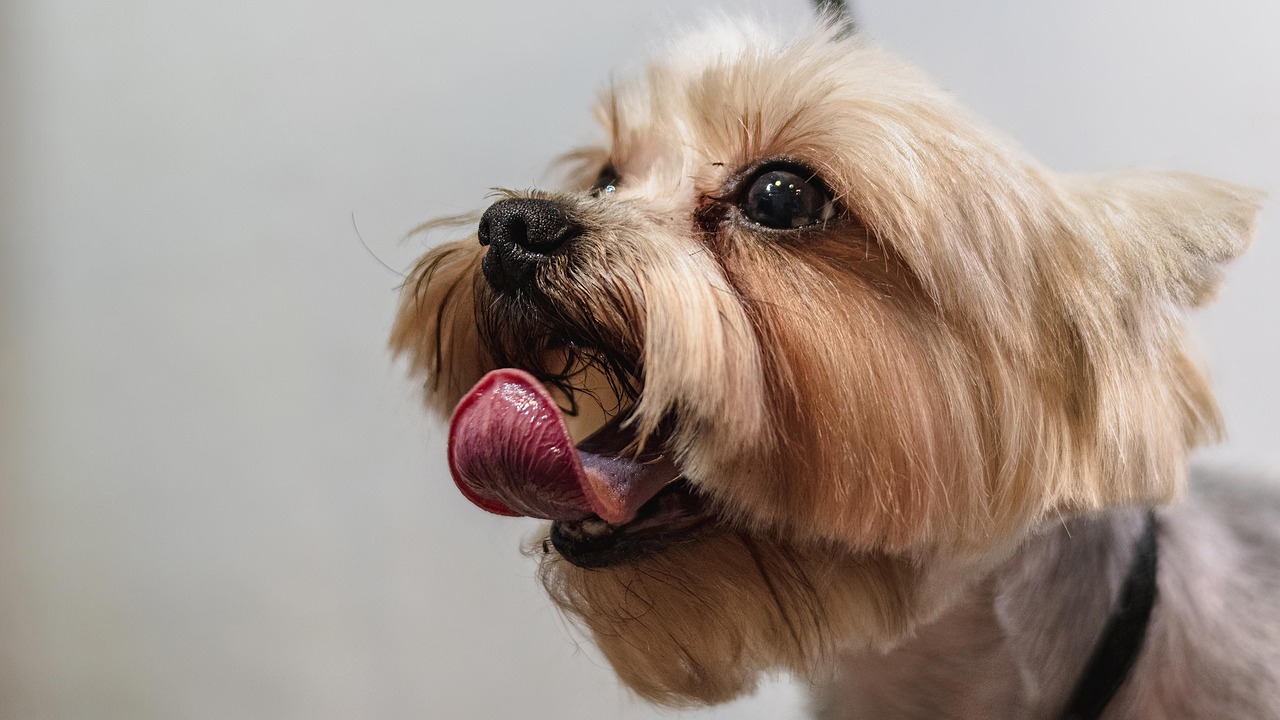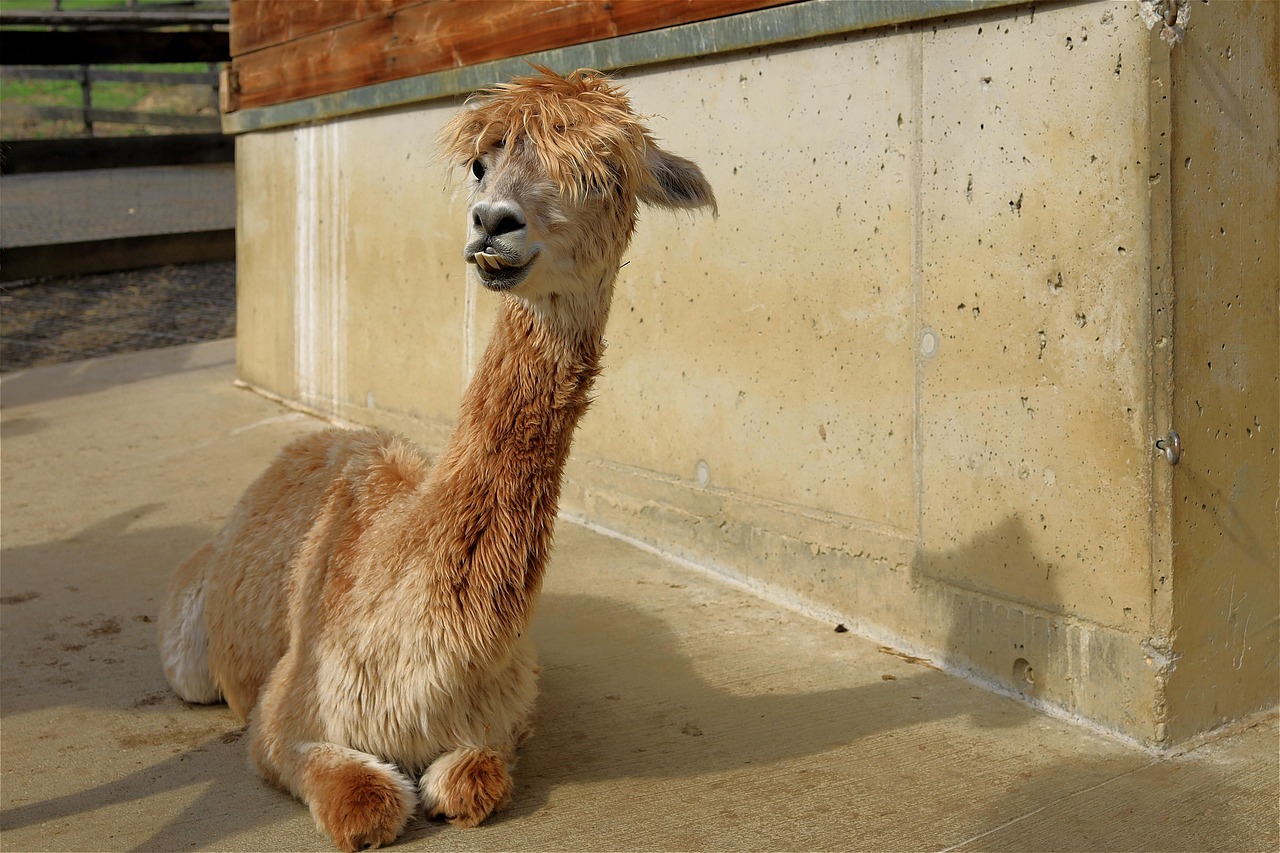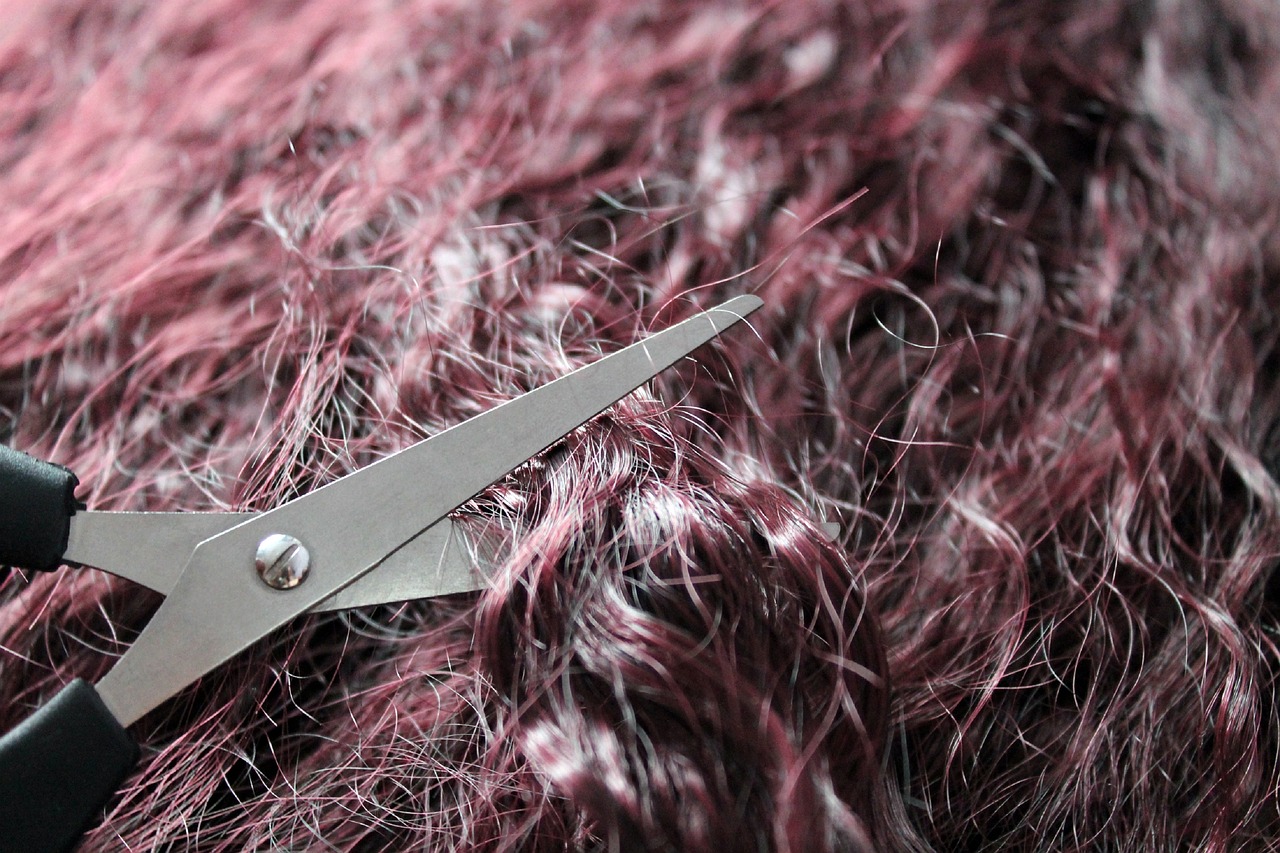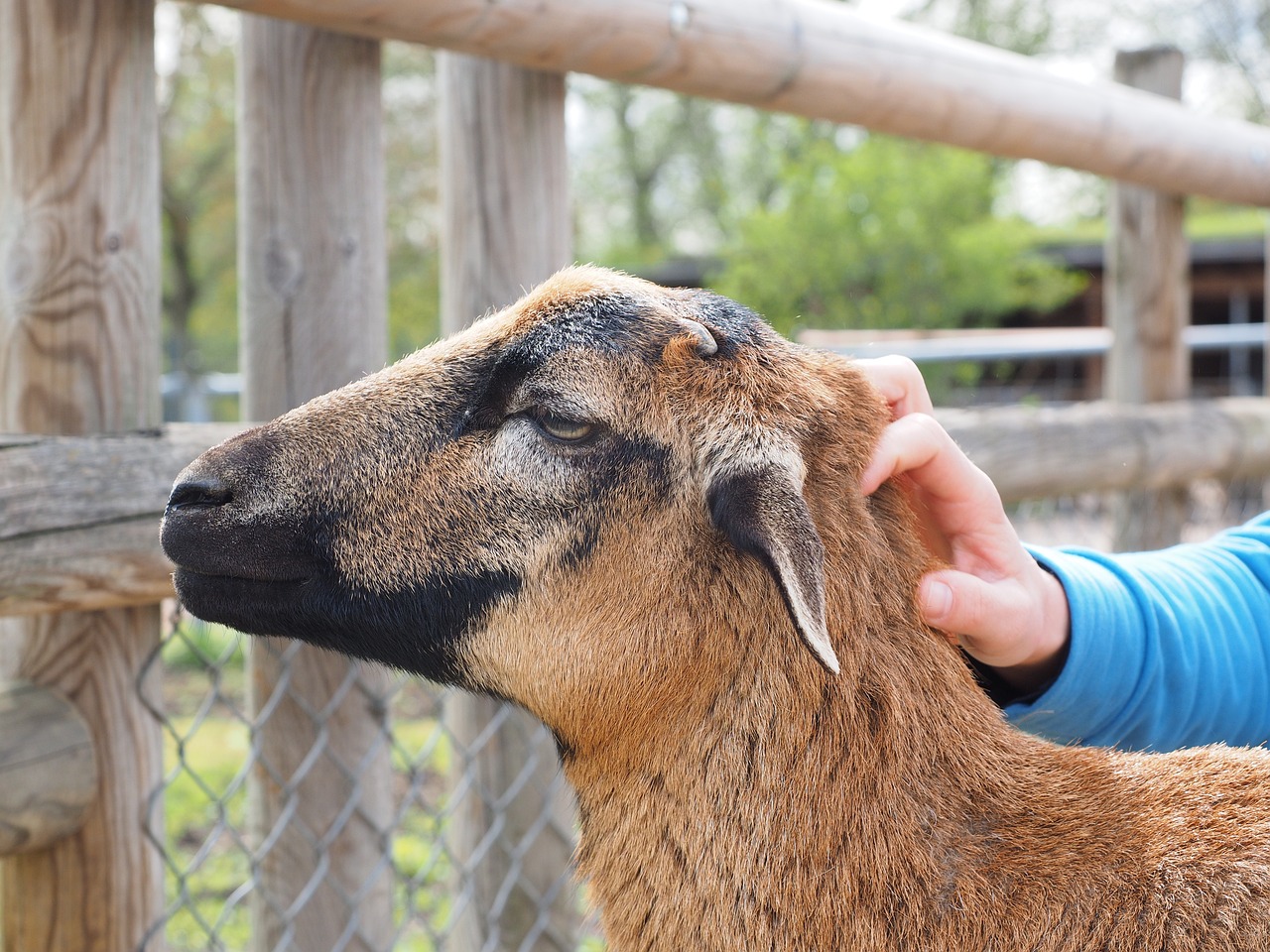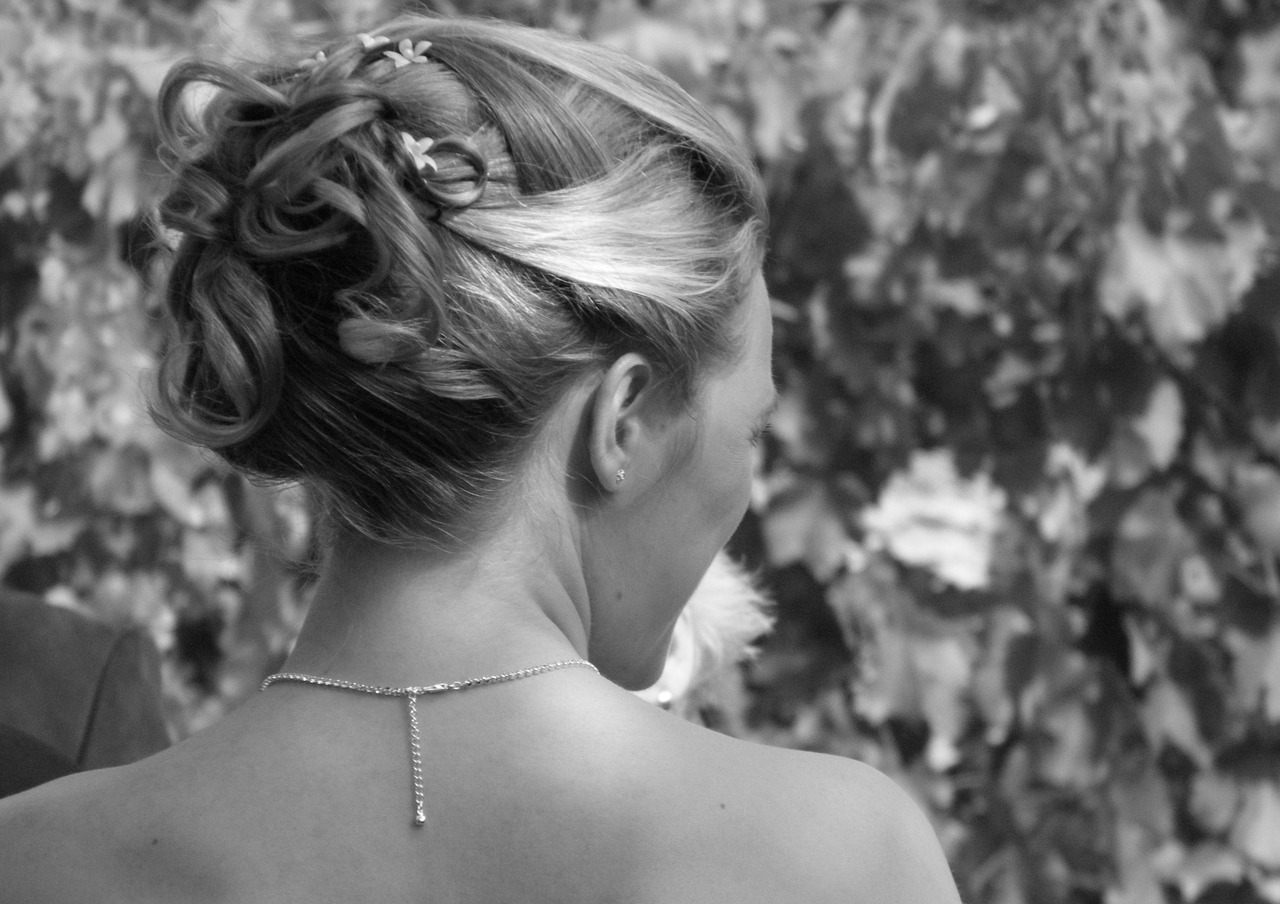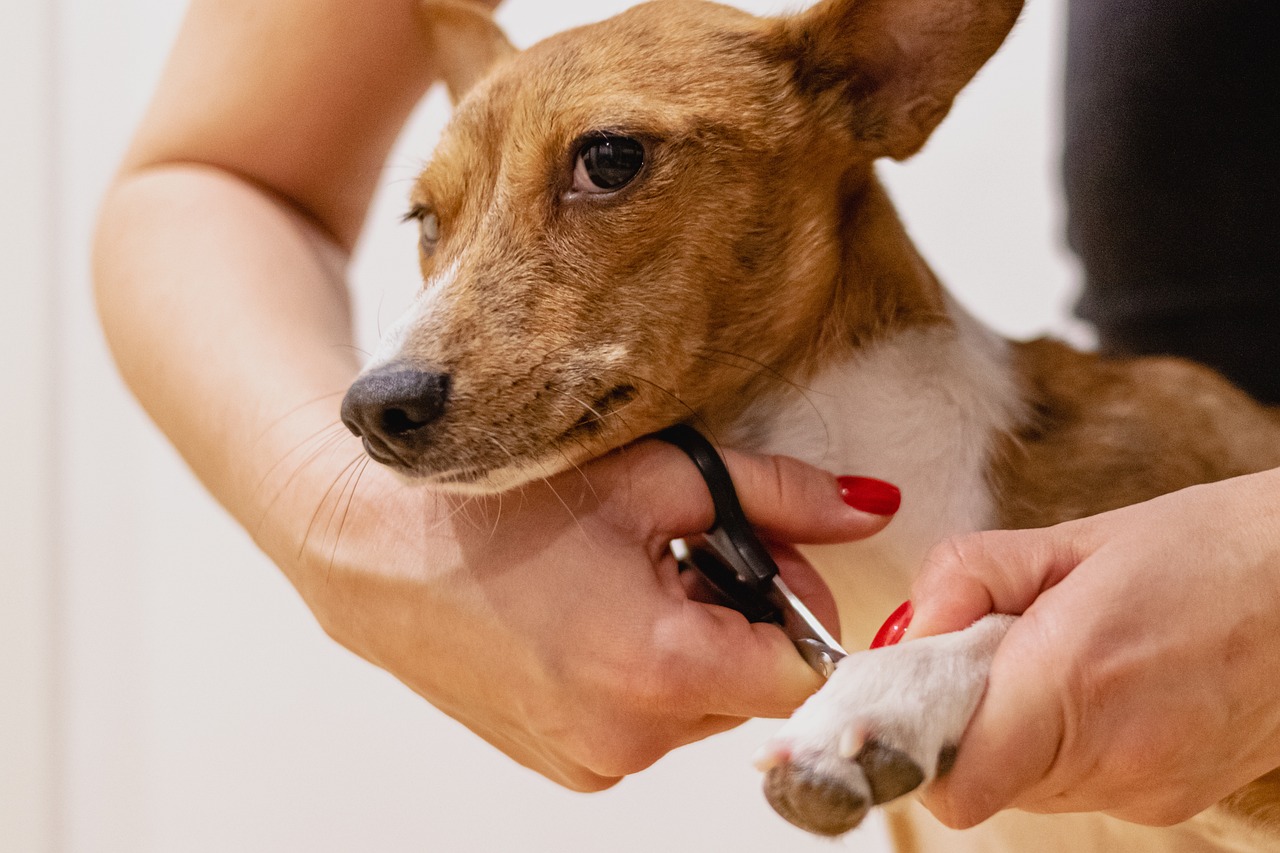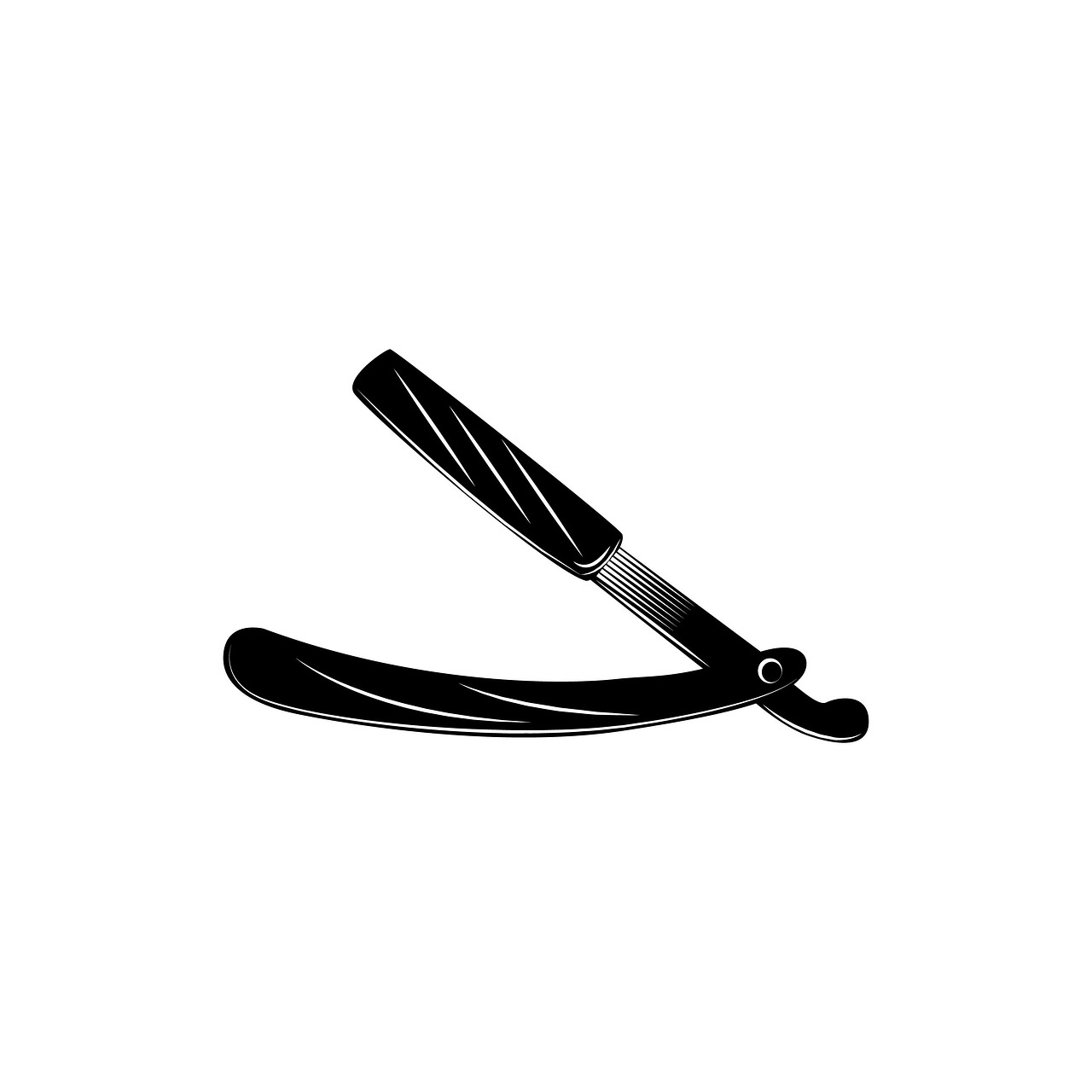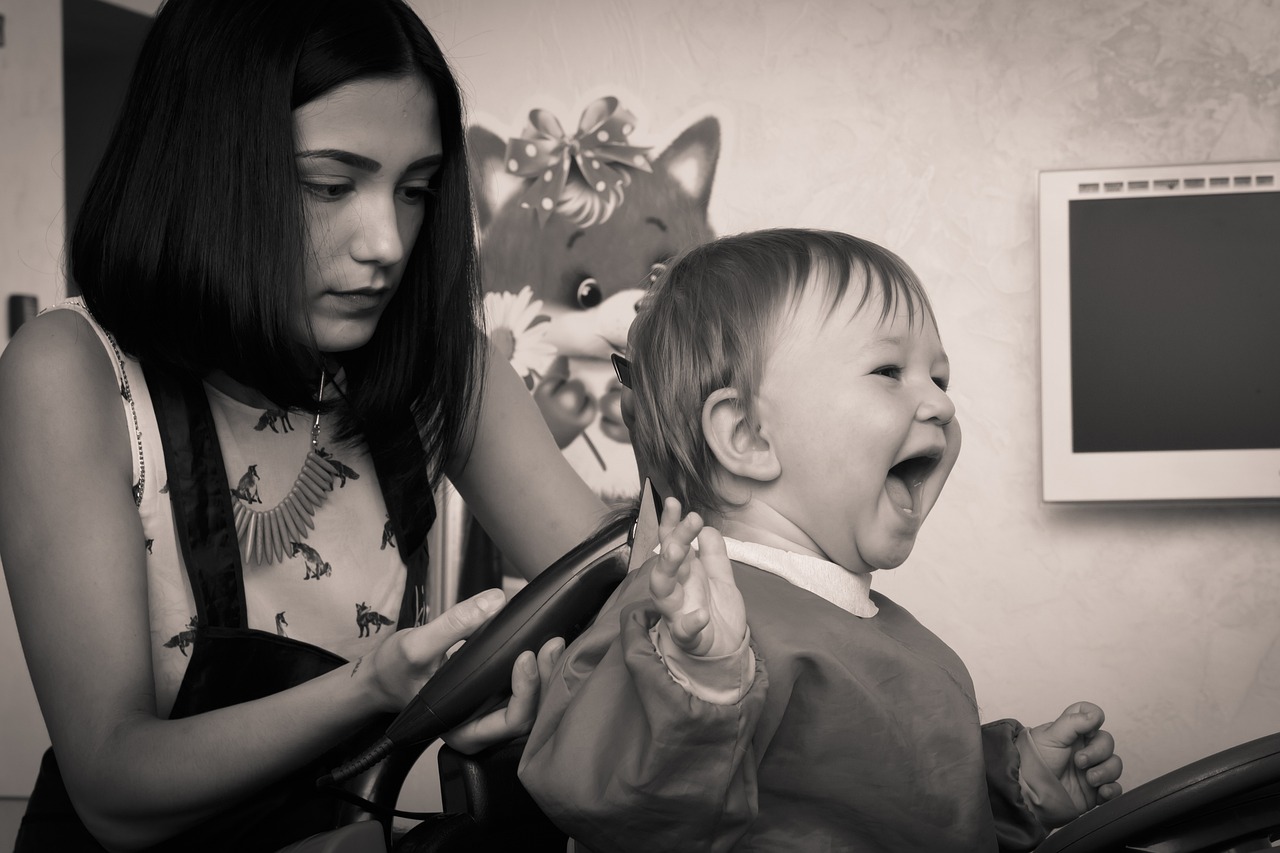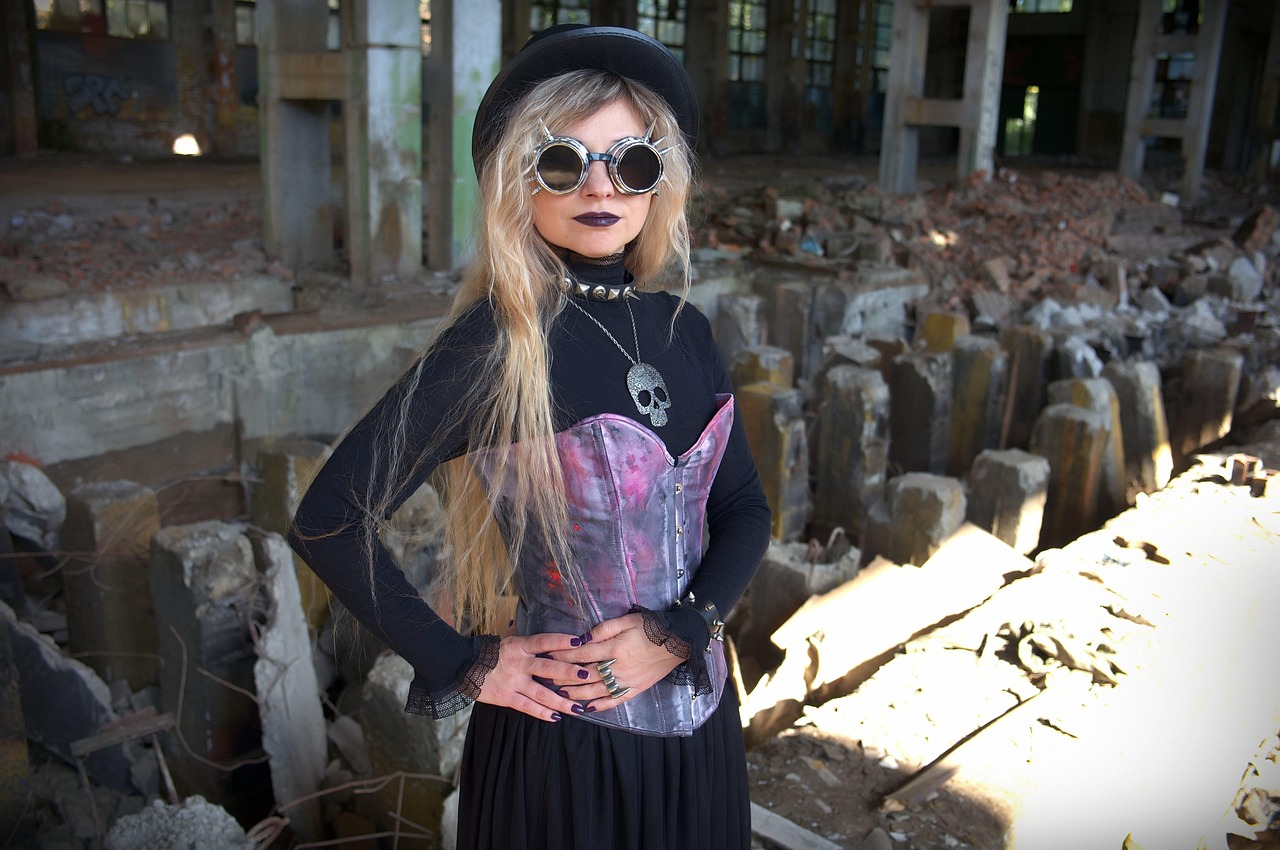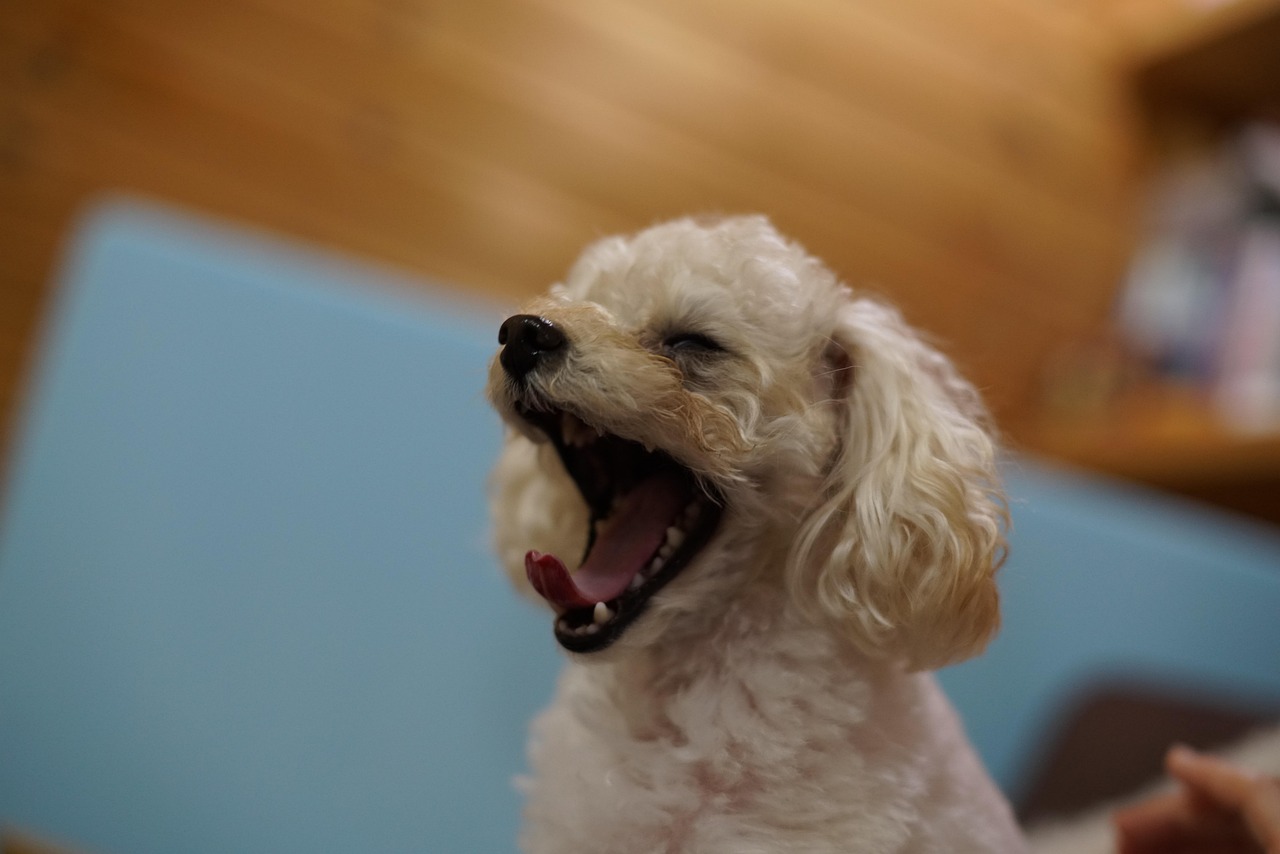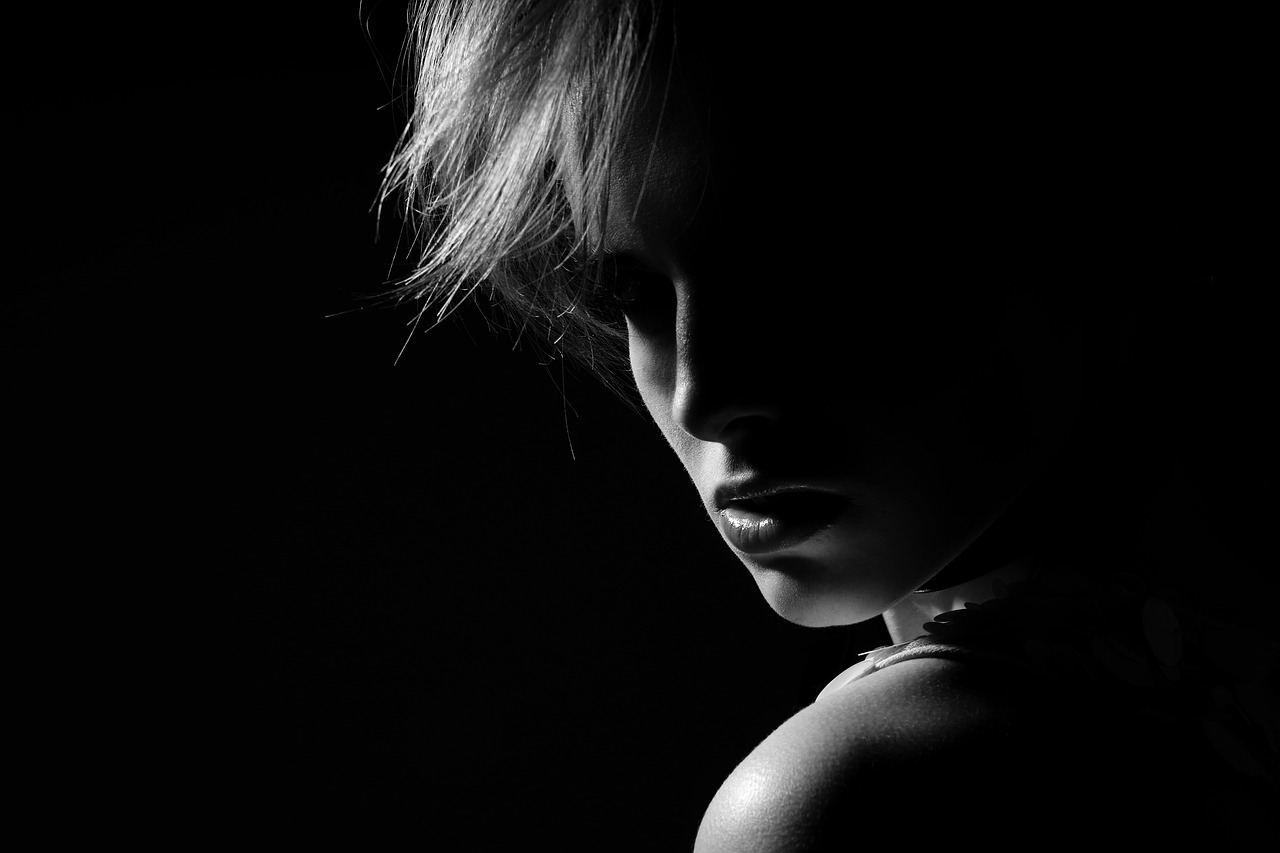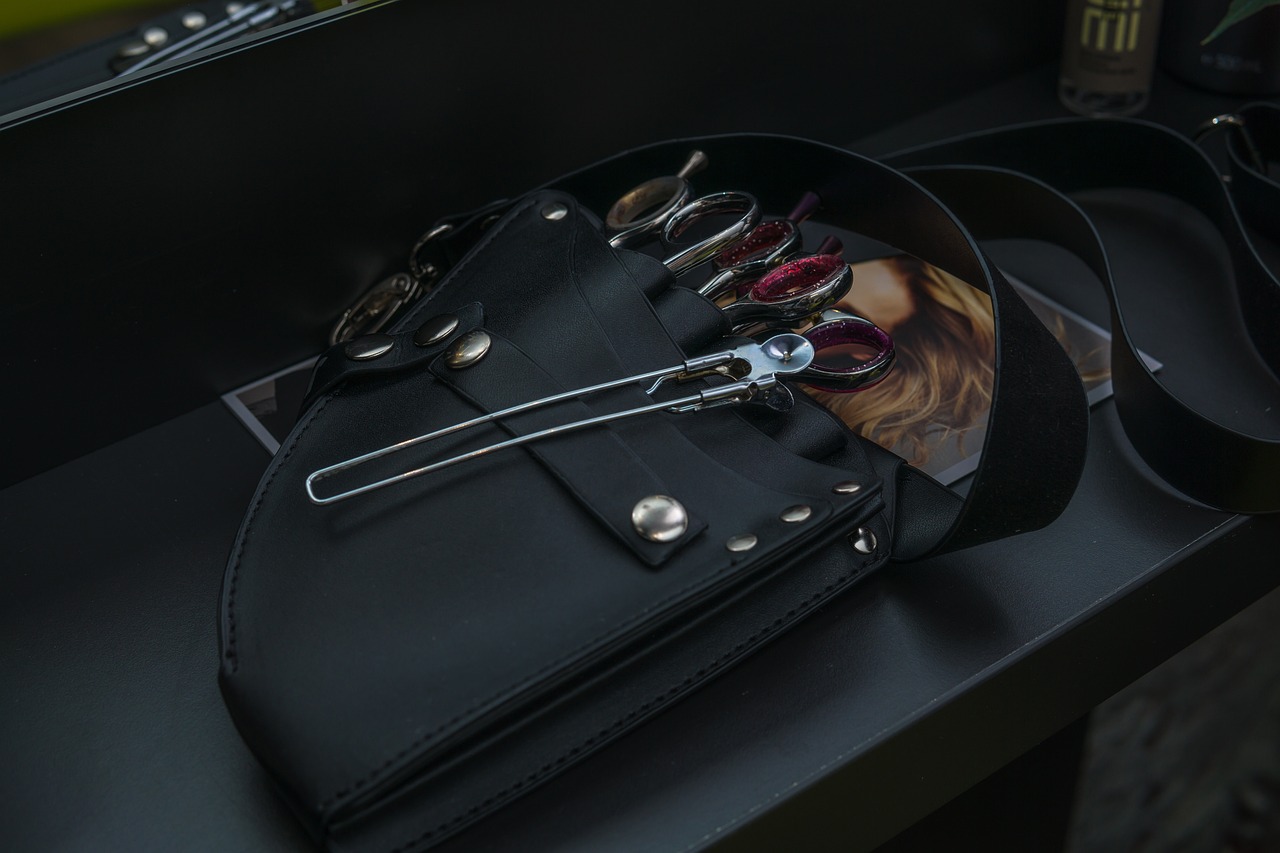Men’s haircuts are more than just a routine grooming task; they are a form of personal expression that can enhance your overall appearance. This guide delves into various men’s haircut styles, helping you navigate the choices based on your face shape, hair type, and individual style preferences.
In today’s fashion landscape, men’s haircut styles are diverse and ever-evolving. From timeless classics like the buzz cut to contemporary styles such as the fade or quiff, there is a myriad of options to explore. Understanding these styles can help you choose one that aligns with current trends while also suiting your unique characteristics.
Your face shape plays a crucial role in determining which haircut will best enhance your features. Identifying whether you have a round, square, oval, or heart-shaped face can guide you toward a flattering style.
For those with a round face, the goal is to create the illusion of length. Consider styles that add height and angles, such as:
- Pompadours – These styles add volume on top, elongating the face.
- Undercuts – The contrast between the long top and short sides can create a more angular appearance.
Men with square faces should opt for haircuts that soften their angular features. Recommended styles include:
- Layered Cuts – These can reduce the harshness of strong jawlines.
- Longer Hair on Top – Pairing longer hair on top with shorter sides helps balance the face.
Before making a decision, it’s essential to consider several factors:
Your hair type—whether straight, wavy, or curly—can significantly influence how a haircut will look. For instance, curly hair may require different cutting techniques to avoid bulkiness.
Some hairstyles demand more upkeep than others. Assess your daily routine to ensure your new style is manageable. If you’re short on time, simpler cuts might be more suitable.
Using the right hair products can elevate your haircut, providing the necessary hold and texture. Here are some options:
When deciding between pomades and wax, consider the finish you desire. Pomades offer a shiny look, while wax provides a matte finish, allowing for a more natural appearance.
Hair gels can be excellent for achieving a slick, polished look, but it’s important to choose a gel that suits your hair type and desired style.
Clear communication with your barber is vital for achieving your desired haircut. Here are some tips:
Reference photos can help bridge the gap between your expectations and the barber’s understanding. They provide a visual guide that can clarify your preferences.
Utilizing specific terminology, such as fade, textured, or undercut, helps convey exactly what you envision for your haircut.
In summary, understanding the various men’s haircut styles and how they relate to your personal features is essential for making an informed decision. By considering your face shape, hair type, and maintenance preferences, you can confidently choose a haircut that complements your style.

What Are the Most Popular Men’s Haircut Styles?
In the ever-evolving world of men’s fashion, haircuts play a pivotal role in defining personal style. Whether you’re looking to make a bold statement or simply maintain a classic look, understanding the most popular men’s haircut styles can help you stay ahead of the trends. This guide delves into various styles, ensuring you find a cut that not only suits your personality but also enhances your overall appearance.
When it comes to men’s haircuts, there are a plethora of options available, ranging from timeless classics to contemporary trends. Here are some of the most sought-after styles that are currently making waves:
- Buzz Cut: This low-maintenance style is ideal for those who prefer a clean and simple look. The buzz cut is versatile and works well with various face shapes.
- Fade: A fade can be incorporated into almost any haircut, providing a smooth transition from short to long hair. Variations include low, mid, and high fades, each offering a distinct look.
- Pompadour: This classic style features longer hair on top that is styled upwards and back, paired with shorter sides. The pompadour exudes confidence and sophistication.
- Undercut: The undercut involves shaving the sides and back while leaving the top longer. This style allows for various styling options, making it a favorite among trendsetters.
- Textured Crop: This modern cut is characterized by short, choppy layers on top, creating a relaxed yet stylish appearance. It’s perfect for adding volume and texture.
These styles not only cater to different personal preferences but also adapt well to various hair types and face shapes. Choosing the right haircut can enhance your features and showcase your individual style.
Understanding your face shape is crucial in selecting a haircut that will complement your features. Here’s a quick guide:
- Round Faces: Opt for styles that add height and structure, such as pompadours or textured crops.
- Square Faces: Consider softer styles that reduce angularity, such as layered cuts or longer tops with shorter sides.
- Oval Faces: Most styles work well, but avoid overly long hair that can elongate the appearance.
- Heart-Shaped Faces: Look for cuts that balance the wider forehead and narrower chin, like side-swept bangs or longer styles.
Before making a decision, consider the following factors:
- Hair Type: Different hair types respond uniquely to various cuts, influencing how well a style will work for you.
- Maintenance: Assess how much time you can commit to styling and maintaining your haircut.
- Lifestyle: Choose a cut that fits your daily routine and activities, ensuring practicality.
Using the right products can elevate your haircut, providing the desired hold and finish. Popular options include:
- Pomades: Great for achieving a shiny finish and strong hold, suitable for pompadours and slicked-back styles.
- Waxes: Ideal for a matte finish and flexible hold, perfect for textured crops and messy styles.
- Gels: Best for a polished look, but may not be suitable for all hair types.
Understanding these styles, factors, and products can greatly enhance your grooming experience, ensuring you look your best while expressing your unique style.

How to Choose the Right Haircut for Your Face Shape?
Choosing the right haircut is more than just a matter of personal preference; it is about enhancing your unique features and achieving a look that complements your overall aesthetic. Understanding your face shape plays a pivotal role in this process. By identifying your face shape, you can select a hairstyle that not only flatters your features but also boosts your confidence.
Your face shape determines how different hairstyles will frame your face. A haircut that suits one shape may not work for another. Here are the primary face shapes and their characteristics:
- Oval: Balanced proportions with a slightly rounded jawline.
- Round: Full cheeks and a wider forehead with a rounded chin.
- Square: Strong jawline with a forehead and cheekbones of similar width.
- Rectangular: Longer than it is wide, with a prominent jawline.
- Heart: Wider forehead with a narrow chin.
To find your face shape, pull your hair back and look in the mirror. Measure the width of your forehead, cheekbones, and jawline, and note the length of your face. This will help you determine your face shape and guide you toward the most flattering haircut options.
Once you identify your face shape, you can explore suitable haircut options:
For round faces, the goal is to add height and angles. Consider styles like:
- Pompadour: Adds volume on top, elongating the face.
- Undercut: Keeps the sides short while maintaining length on top.
Square faces benefit from softer styles that reduce angularity. Look for:
- Layered Cuts: These soften the jawline and add texture.
- Longer Hair on Top: This style balances the strong features of a square face.
If you have an oval face, you’re in luck! Most styles will suit you. However, consider:
- Textured Crop: Adds volume and movement.
- Side Part: A classic look that enhances your natural symmetry.
For heart-shaped faces, opt for styles that balance the forehead and chin. Recommended cuts include:
- Side-Swept Bangs: These draw attention away from a wider forehead.
- Longer Styles: Help to elongate the face and soften features.
While face shape is crucial, other factors also come into play:
- Hair Type: Straight, wavy, or curly hair reacts differently to various cuts.
- Maintenance: Consider how much time you can devote to styling your hair daily.
- Lifestyle: Your daily activities can influence your haircut choice. A low-maintenance style may be best for a busy lifestyle.
In summary, selecting the right haircut is a blend of understanding your face shape, considering your hair type, and aligning with your lifestyle. By taking these factors into account, you can achieve a look that not only flatters your features but also reflects your personal style.
Round Face: What Haircuts Work Best?
When it comes to choosing the right haircut, understanding your face shape is crucial. For men with round faces, the objective is to create the illusion of length and angles. This can be achieved through specific haircut styles that add height and structure. Below, we explore the best haircut options for round faces, ensuring you look your best.
A haircut that complements a round face can significantly enhance your overall appearance. The right style can make your face appear slimmer and more elongated. By opting for cuts that introduce height and sharp angles, you can counterbalance the softer features typical of a round face.
- Pompadour: This classic style adds significant height on top while keeping the sides shorter. The volume created by the pompadour draws attention upwards, elongating the face.
- Undercut: An undercut features short sides with longer hair on top, creating a stark contrast that adds definition. This style can be styled in various ways, allowing versatility while maintaining an elongated appearance.
- Fade Haircuts: A fade can add depth and dimension to your look. By gradually shortening the hair from the top down, you can create a more angular appearance that flatters a round face.
- Textured Crop: Adding texture to your hair can create volume and definition. A textured crop can be styled to add height, making it a great choice for those with round faces.
- Side Part: A classic side part can help create a more structured look. By parting your hair to one side, you can break up the roundness of your face and add a sense of balance.
Once you’ve selected a haircut, styling is key to achieving the desired look. Here are some tips:
- Use Volume-Enhancing Products: Products like volumizing mousse or spray can help lift the hair at the roots, adding height and structure.
- Experiment with Hair Products: Pomades, waxes, and gels can help you achieve different styles. For a sleek look, opt for pomade; for a more matte finish, try wax.
- Regular Maintenance: To keep your haircut looking sharp, regular visits to the barber are essential. This ensures that the shape remains intact and continues to flatter your face shape.
Choosing the right haircut for a round face can dramatically enhance your appearance. By selecting styles that add height and angles, such as pompadours and undercuts, you can create a more elongated look. Remember to consider your personal style and hair type when making your choice, and don’t hesitate to consult with your barber for tailored advice. With the right haircut and styling techniques, you can confidently embrace your round face and showcase your unique style.
Side Part: A Timeless Choice
The side part is a haircut style that has stood the test of time, proving to be an excellent choice for various face shapes, particularly for those with round faces. This style not only offers a clean and structured appearance but also plays a crucial role in enhancing the overall balance of facial proportions.
For men with round faces, the side part is particularly advantageous as it introduces an element of angularity. By directing the hair to one side, it creates the illusion of length, which can help to elongate the face and provide a more defined jawline. This effect is especially beneficial for those who may feel their face appears fuller or softer.
One of the appealing aspects of the side part is its versatility. It can be adapted to suit various hair types and lengths, making it a practical option for many. Whether you have straight, wavy, or curly hair, the side part can be tailored to your specific texture and styling preferences. For instance:
- Straight Hair: A side part can be styled sleek and polished, ideal for professional settings.
- Wavy Hair: A more relaxed side part can enhance natural waves, offering a casual yet stylish look.
- Curly Hair: The side part can help to manage volume, allowing curls to frame the face beautifully.
When considering a side part, it’s essential to think about the maintenance required. This style can be relatively low-maintenance, especially if you opt for a shorter cut on the sides. However, regular trims are advisable to keep the look sharp and prevent the hair from growing out too much, which can disrupt the defined part.
In terms of styling products, using a lightweight pomade or styling cream can help maintain the side part without weighing the hair down. These products provide hold while allowing for a natural finish, ensuring that your hairstyle looks effortlessly put together throughout the day.
Moreover, the side part is not just limited to casual wear; it can easily transition to more formal occasions. Pairing it with a suit or smart casual attire can elevate your overall appearance, making it a versatile choice for various events.
Ultimately, the side part is a timeless haircut that offers both style and functionality. Its ability to enhance facial features while providing a structured look makes it an ideal option for men with round faces. If you’re considering a new haircut, the side part might just be the perfect fit for you.
Textured Crop: Modern and Stylish
The textured crop is rapidly gaining popularity among men seeking a fresh, modern look. This haircut not only adds volume and definition but also provides a contemporary style that is particularly flattering for those with round faces. By incorporating texture, this cut enhances the natural movement of the hair, creating a dynamic appearance that is both stylish and easy to maintain.
For men with round faces, the goal is to create the illusion of length and angles. A textured crop achieves this by adding layers and volume at the top while keeping the sides shorter. This contrast helps to elongate the face, providing a more balanced look. Additionally, the textured crop is versatile, allowing for various styling options, from a messy, casual finish to a more polished appearance for formal occasions.
Styling a textured crop is straightforward and requires minimal products. Here are some tips:
- Use a lightweight styling cream or mousse to enhance texture without weighing the hair down.
- Apply product to damp hair and use your fingers to create a tousled look.
- For a more structured style, use a comb to define the front while keeping the back and sides more relaxed.
While the textured crop is ideal for round faces, it can also suit various face shapes. Men with oval or square faces can benefit from the added volume and texture, helping to soften angular features. The key is to adjust the length and texture according to individual facial proportions, ensuring a tailored look.
One of the best aspects of the textured crop is its low maintenance requirements. Regular trims every 4-6 weeks will help maintain the shape and prevent the style from becoming unruly. Using the right hair products is crucial; opt for those that provide hold without stiffness, allowing for a natural finish.
There are several variations of the textured crop that can cater to different personal styles:
- Textured Crop with Fade: A popular choice that combines the textured top with faded sides for a clean look.
- Longer Textured Crop: This version leaves more length on top, allowing for greater styling versatility.
- Textured Crop with Fringe: Incorporating a fringe can add a youthful vibe and frame the face nicely.
In summary, the textured crop is a fantastic choice for men looking to enhance their style while flattering their facial features. Its modern appeal, ease of maintenance, and versatility make it a go-to haircut for many. Whether you’re heading to the office or out for a casual evening, this haircut can be adapted to suit any occasion. Embrace the texture, and enjoy a fresh, contemporary look!
Square Face: Which Cuts Are Most Flattering?
When it comes to selecting the perfect haircut, understanding your face shape is essential. For those with a square face, characterized by strong jawlines and angular features, the right haircut can make a significant difference in softening these lines and enhancing overall appearance. Here, we discuss the most flattering styles for square faces, focusing on cuts that bring balance and harmony to your look.
Square faces often possess a defined jawline and broad forehead, which can create a striking yet sometimes harsh appearance. To counteract this, it is beneficial to opt for haircuts that introduce softness and movement. This can be achieved through various techniques such as layering, texturizing, and strategic length adjustments.
One of the most effective ways to soften the angularity of a square face is through layered haircuts. Layers add dimension and can be tailored to frame the face beautifully. Here are some popular layered styles:
- Long Layers: Keeping longer hair with subtle layers can create a gentle flow that softens the jawline.
- Shag Cuts: A modern shag cut with varying lengths can introduce texture and movement, diverting attention from sharp angles.
- Textured Layers: Incorporating texture into the layers can enhance volume while maintaining a soft appearance.
Another flattering option for square faces is a haircut that features longer hair on top with shorter sides. This style not only adds height but also helps to elongate the face, creating a more balanced look. Consider these styles:
- Undercut: An undercut can provide a dramatic contrast, drawing attention upwards while softening the face’s overall appearance.
- Pompadour: The pompadour adds volume on top, which is effective in elongating the face and softening its features.
- Quiff: A quiff can also be a stylish choice, offering a modern twist while maintaining the necessary volume and height.
In addition to choosing the right haircut, facial hair can also play a significant role in softening angular features. A well-groomed beard or stubble can add definition and complement a square jawline. Here are some tips:
- Goatee: A goatee can create an illusion of length, balancing the width of the face.
- Stubble: Light stubble can soften the jawline while adding a rugged appeal.
- Full Beard: A full beard can provide structure and balance, especially when kept well-trimmed.
When considering a new haircut, it’s crucial to communicate your needs effectively with your barber. Bring reference photos and describe the aspects of the haircut that appeal to you. Terms like layered, textured, and undercut can help your barber understand your vision, ensuring that you leave the salon with a style that flatters your square face.
In conclusion, selecting the right haircut for a square face involves understanding how to soften angular features while enhancing your personal style. Layered cuts, longer tops with shorter sides, and thoughtful facial hair choices can all contribute to a more balanced and appealing look.

What Factors Should You Consider Before Getting a Haircut?
Choosing the right haircut can significantly impact your overall appearance and confidence. Before making a commitment to a new style, it is essential to consider several key factors that can influence the practicality and suitability of your haircut. This guide will help you navigate these considerations effectively.
When contemplating a haircut, it is crucial to assess your hair type, maintenance level, and lifestyle. Each of these elements plays a vital role in determining whether a particular haircut will work well for you.
- Straight Hair: This type tends to hold styles well, but can lack volume. Consider cuts that add texture or layers to create movement.
- Wavy Hair: Wavy hair offers versatility. Opt for styles that enhance your natural waves, such as layered cuts or textured crops.
- Curly Hair: Curly hair requires careful consideration. Haircuts that shape and define curls, like a curly top with shorter sides, can enhance your look.
Understanding your maintenance capacity is crucial. Some hairstyles demand regular upkeep, while others are more low-maintenance. Here are some considerations:
- High Maintenance: Styles like a pompadour or undercut may require daily styling and frequent visits to the barber.
- Low Maintenance: A buzz cut or a simple crew cut can save time and effort, making them ideal for those with a busy lifestyle.
Your lifestyle plays a significant role in determining the right haircut. Consider the following:
- Professional Environment: If you work in a corporate setting, you might want a more conservative cut that aligns with professional standards.
- Active Lifestyle: If you lead an active life, opt for a haircut that is easy to manage and won’t require constant styling.
- Personal Style: Your haircut should reflect your personality and style. Choose a cut that makes you feel confident and comfortable.
Before finalizing your haircut, consult with your barber. They can provide valuable insights based on your hair type and face shape, ensuring you choose a style that suits you best. Don’t hesitate to ask questions and share your preferences.
In conclusion, taking the time to consider your hair type, maintenance level, and lifestyle will help you make an informed decision about your haircut. By doing so, you can ensure that your new style is not only fashionable but also practical and manageable.
Hair Type: How Does It Affect Your Cut?
When it comes to selecting the perfect haircut, understanding your hair type is essential. Different hair types—straight, wavy, and curly—each respond uniquely to various cuts, which significantly influences how well a style will suit you. This article delves into how each hair type interacts with different haircut styles, ensuring you make an informed decision that enhances your overall look.
Straight hair is often seen as the most versatile type, allowing for a wide range of haircut styles. Layered cuts can add movement and volume, while blunt cuts provide a clean and polished appearance. Men with straight hair can also experiment with undercuts or fade styles, which can create a striking contrast and highlight the smooth texture of their hair.
Wavy hair offers a beautiful blend of texture and volume, making it ideal for textured cuts that enhance its natural waves. Styles like the textured crop or longer layers can showcase the waves while maintaining a manageable look. It’s important to avoid overly structured cuts, as they may weigh down the waves, leading to a less flattering appearance. Instead, embrace styles that allow the waves to flow and create dimension.
Curly hair requires special consideration when choosing a haircut. Opting for layered cuts can help reduce bulk and define curls, preventing the infamous “pyramid” shape. Styles like the curly undercut or medium-length curls can provide a modern twist while allowing curls to bounce freely. It’s crucial to communicate with your barber about your curl pattern to ensure the cut complements your natural texture.
Your hair type not only affects the style you choose but also the maintenance required to keep it looking its best. Straight hair often needs regular trims to maintain its shape, while wavy hair may require specific products to enhance texture without weighing it down. Curly hair typically benefits from hydrating products and less frequent cuts to maintain curl definition. Understanding these maintenance needs can help you select a haircut that fits seamlessly into your lifestyle.
Ultimately, the key to a successful haircut lies in choosing a style that complements your hair type. Here are some tips:
- Straight Hair: Consider styles with movement, such as layered cuts.
- Wavy Hair: Embrace your natural texture with textured layers.
- Curly Hair: Opt for cuts that define curls without adding bulk.
By understanding how your hair type affects your haircut, you can make more informed decisions that enhance your personal style. Always consult with your barber about the best options for your specific hair type, and don’t hesitate to bring reference photos to communicate your vision clearly.
Maintenance: How Much Time Can You Commit?
When it comes to choosing a hairstyle, one of the most critical factors to consider is the maintenance required to keep it looking sharp. Some hairstyles demand more upkeep than others, and understanding your own maintenance capacity can significantly influence your decision. This section will delve into the various aspects of haircut maintenance, helping you select a style that aligns with your lifestyle and preferences.
Haircut maintenance involves the time and effort needed to keep your hairstyle looking fresh and styled. Factors that contribute to maintenance include the complexity of the cut, the products required, and how often you need to visit the barber. High-maintenance styles typically require regular trims, specialized products, and daily styling, while low-maintenance cuts can often be washed and left to air dry.
Before committing to a new haircut, it’s essential to assess your daily routine. Ask yourself the following questions:
- How much time can you realistically dedicate to styling your hair each day?
- Do you prefer a fuss-free approach, or are you willing to invest time in styling?
- How often can you visit the barber for trims?
Your answers will guide you toward a haircut that suits your lifestyle. For example, if you have a busy schedule, you might want to opt for a low-maintenance cut like a buzz cut or a simple crew cut.
High-maintenance hairstyles, such as pompadours or undercuts, often require daily styling and regular visits to the barber. These styles can be incredibly stylish but demand a commitment to upkeep. On the other hand, low-maintenance styles, like the textured crop or messy fringe, can be easily managed with minimal effort. They typically require less frequent trims and are more forgiving as they grow out.
The products you use can also impact the maintenance level of your hairstyle. For instance, if you choose a style that requires a lot of hold, you may need to invest in high-quality hair products such as pomades, waxes, or gels. Understanding how to use these products effectively can make a significant difference in how your haircut looks and feels throughout the day.
When discussing maintenance with your barber, be open about your lifestyle and preferences. A skilled barber can help you find a balance between style and maintenance. Bring along reference photos and be specific about how much time you can dedicate to your hair routine. This communication ensures that you leave the barbershop with a haircut that not only looks great but also fits seamlessly into your daily life.
Ultimately, the key to a successful haircut lies in understanding your maintenance capacity. By considering your lifestyle, the time you can commit, and the products you are willing to use, you can choose a hairstyle that enhances your appearance without overwhelming your routine. Remember, a well-chosen haircut can boost your confidence and ensure you always look your best, regardless of how much time you have to invest in it.

What Are the Best Hair Products for Men’s Haircuts?
When it comes to achieving the perfect haircut, the right hair products can make all the difference. Using quality hair products not only enhances your haircut but also provides hold, shine, and texture tailored to your specific style. In this section, we will explore the best hair products for men, helping you select the ideal options to complement your haircut.
Hair products play a crucial role in defining and maintaining your hairstyle. They can transform a simple cut into a stylish statement. Here are some reasons why using the right products is important:
- Enhancement: Products can enhance the natural texture of your hair, making your haircut look more polished.
- Control: They provide the necessary hold to keep your style in place throughout the day.
- Protection: Many products offer protection against environmental factors, such as humidity and pollution.
Choosing the right hair products depends on your hair type and the style you want to achieve. Here are some popular categories:
Pomades are ideal for achieving a sleek, shiny look. They work well for styles that require a strong hold without stiffness. Pomades come in both water-based and oil-based formulas:
- Water-based pomades are easier to wash out and offer a lighter hold.
- Oil-based pomades provide a stronger hold but can be more challenging to remove.
If you prefer a more natural, matte finish, hair wax is an excellent choice. Waxes provide a flexible hold, allowing you to reshape your hair throughout the day. They are particularly effective for textured styles and short haircuts.
Hair gels are perfect for achieving a polished appearance. They offer a strong hold and are great for styles that need to stay in place. However, gels can sometimes leave hair feeling crunchy, so it’s essential to choose a quality product.
Hair creams are ideal for men with thicker or curly hair. They provide moisture and definition without weighing hair down. Creams are great for achieving a natural look while maintaining some control over your style.
Selecting the right product depends on your hair type and the desired outcome. Here are some tips:
- Straight Hair: Consider lightweight gels or creams for a natural look.
- Wavy Hair: Use pomades or waxes to enhance texture and control frizz.
- Curly Hair: Opt for creams or specialized curl products to define curls without stiffness.
Proper application techniques can significantly impact the effectiveness of hair products:
- Start with a small amount: It’s easier to add more product than to remove excess.
- Warm the product in your hands: This helps to distribute it evenly through your hair.
- Apply to damp hair: Many products work best when applied to slightly damp hair, as this can help with even distribution and absorption.
In conclusion, using the right hair products tailored to your haircut can significantly enhance your overall look. By understanding the various types of products available and how to apply them effectively, you can achieve a stylish and polished appearance that reflects your personal style.
Pomades vs. Wax: Which Is Right for You?
When it comes to styling men’s hair, the choice of products can significantly influence the overall look and feel. Among the most popular options are pomades and wax, each offering distinct advantages depending on your styling needs. Understanding the differences between these two products can help you achieve the perfect finish for your hairstyle.
Pomades are versatile hair products known for their ability to provide a shiny finish and a strong hold. They are typically oil-based or water-based, which affects their application and removal. Oil-based pomades offer a more intense shine and a slick look, making them ideal for styles like the classic pompadour or slicked-back hair. On the other hand, water-based pomades are easier to wash out and can offer a lighter hold, making them suitable for more relaxed styles.
Wax, in contrast, is designed to give a matte finish with a flexible hold. It is usually made from natural waxes and oils, which allow for easy re-styling throughout the day. Wax is perfect for textured hairstyles and can help create definition, making it a favorite for messy, casual looks. Unlike pomades, wax does not weigh the hair down, giving it a more natural appearance.
- Desired Finish: If you prefer a shiny, polished look, pomade is the way to go. For a more understated, matte style, wax is your best bet.
- Hair Type: Consider your hair type; pomades work well on thick or coarse hair, while wax is often better suited for fine or thin hair.
- Style Longevity: For styles that need to last all day without losing shape, pomades provide a stronger hold, whereas wax allows for more flexibility.
- Ease of Use: If you’re looking for a product that’s easy to apply and wash out, water-based pomades are typically more user-friendly compared to wax.
When applying pomade, start with a small amount, warming it up between your palms before working it through damp or dry hair. This ensures even distribution and helps achieve the desired slick look. For wax, use a similar technique; take a small amount, rub it between your fingers, and apply it to dry hair for a more textured finish.
Yes, some stylists recommend mixing pomade and wax to achieve a custom finish that combines the best of both worlds. This allows for a controlled shine with added texture, perfect for those who want versatility in their hairstyle.
Ultimately, the choice between pomades and wax comes down to personal preference and the specific look you want to achieve. By understanding the unique properties of each product, you can make an informed decision that complements your hairstyle while enhancing your overall appearance. Experimenting with both can also lead to discovering the ideal combination that works best for your hair.
Hair Gels: When to Use Them?
When it comes to styling hair, hair gels play a significant role in achieving a desired look. They are particularly useful for those aiming for a slick and polished appearance. However, it is essential to understand that hair gels may not be suitable for every haircut or hair type. In this section, we will explore when to use hair gels, their benefits, and the potential drawbacks.
Hair gels are styling products designed to provide hold and shine to hair. They are typically water-based and can range from light to strong hold, allowing users to choose a product that fits their styling needs. The primary purpose of hair gel is to help maintain a hairstyle throughout the day, making it a popular choice for many.
- Long-lasting Hold: Hair gels provide a strong hold that can keep your hairstyle intact for hours, making them ideal for special occasions or long days.
- Shine and Gloss: Many hair gels add a noticeable shine to your hair, enhancing its overall appearance.
- Versatility: Gels can be used for various styles, from slicked-back looks to defined curls, making them a versatile addition to your grooming routine.
Hair gels are particularly beneficial for individuals with straight or wavy hair types. These hair types often require a product that can provide structure and hold without becoming limp. Additionally, those with shorter haircuts may find gels useful for achieving a defined style.
While hair gels can be advantageous, they may not suit everyone. Here are some scenarios where gels might not be the best choice:
- Curly Hair: For individuals with curly hair, gels can sometimes lead to a crunchy texture, making curls appear less natural.
- Thick Hair: Those with thick hair may find that gels do not provide enough hold, resulting in a style that falls flat.
- Long Hair: For longer hairstyles, gels can weigh hair down and may not provide the desired volume or movement.
To achieve the best results with hair gel, follow these steps:
1. Start with clean, damp hair.2. Take a small amount of gel (about a dime-sized amount).3. Rub the gel between your palms to warm it up.4. Apply evenly throughout your hair, starting from the back and moving to the front.5. Style your hair as desired, using a comb or your fingers to achieve the look.
If hair gels are not suitable for your hair type or desired style, consider these alternatives:
- Pomades: Provide a flexible hold with a shiny finish, ideal for classic styles.
- Waxes: Offer a matte finish with a strong hold, perfect for textured looks.
- Creams: Great for adding moisture and light hold, suitable for a more natural appearance.
Ultimately, the choice of whether to use hair gel depends on your individual hair type and the style you wish to achieve. By understanding the benefits and limitations of hair gels, you can make an informed decision that enhances your overall look.

How to Communicate Your Desired Haircut to Your Barber?
When it comes to getting the perfect haircut, effective communication with your barber is crucial. Many individuals find it challenging to articulate their haircut preferences, which can lead to unsatisfactory results. To avoid this, understanding how to convey your desires clearly can make all the difference.
Communicating your haircut preferences not only helps your barber understand your vision but also ensures that you leave the salon feeling satisfied with your new look. A clear description minimizes the chances of misinterpretation, which can often lead to disappointment. Remember, your barber is a professional, but they rely on your input to achieve the desired outcome.
- Length: Specify how much hair you want to be cut. Use terms like “trim,” “short,” or “long” to convey your preferences.
- Style: Discuss the specific style you are aiming for, such as a fade, undercut, or textured crop.
- Maintenance: Be honest about how much time you are willing to spend styling your hair daily. This will help your barber recommend a cut that fits your lifestyle.
Bringing reference photos is one of the best ways to communicate your desired haircut. Visual aids can eliminate ambiguity and provide a clear benchmark for your barber. When selecting photos, choose images that closely resemble what you want. Consider different angles and lighting to give your barber a comprehensive view of the style.
Using specific terminology can significantly enhance your communication with your barber. Here are some key terms to consider:
- Fade: A gradual transition from short to long hair.
- Textured: Layers added to create volume and movement.
- Undercut: Short sides with longer hair on top.
Your hair type plays a crucial role in how a haircut will look and behave. Be sure to inform your barber whether your hair is straight, wavy, or curly. This information helps them tailor the cut to suit your hair’s natural texture and growth patterns.
Engaging in a dialogue with your barber can further refine your haircut choice. Consider asking:
- What styles would suit my face shape?
- How often should I come in for maintenance?
- What products do you recommend for my hair type?
By following these guidelines, you can significantly improve your chances of achieving the haircut you desire. Remember, a successful haircut is a collaboration between you and your barber, so don’t hesitate to express your thoughts and preferences openly.
Bringing Reference Photos: Why Is It Important?
When it comes to getting a haircut, communication is key. One of the most effective ways to ensure that your barber understands your vision is by bringing reference photos. These images can significantly reduce the chances of miscommunication, bridging the gap between your expectations and the barber’s interpretation.
Reference photos serve as a visual guide, providing clarity on the specific style you desire. Whether you’re looking for a classic fade, a trendy undercut, or a textured crop, showing a picture can help your barber grasp the nuances of your preferred cut. Instead of relying solely on verbal descriptions, which can often lead to misunderstandings, a photo allows for a clear representation of your desired outcome.
Moreover, reference photos can highlight various aspects of a haircut that might be difficult to articulate. For instance, you might want a certain length on top, a specific fade gradient, or how the hair should be styled. By showing a picture, you can effectively communicate these details, ensuring your barber has a comprehensive understanding of what you want.
It’s important to note that the quality and relevance of the reference photos matter. Choose images that closely resemble your hair type and face shape, as this will provide your barber with a more accurate idea of how the style will look on you. For example, a slicked-back style might look great on someone with straight hair, but if you have curly hair, the result could be very different. Thus, selecting appropriate reference photos can help in achieving a more realistic outcome.
In addition, reference photos can also foster a collaborative dialogue between you and your barber. They can ask questions or provide suggestions based on the images you present. This interaction not only enhances the overall experience but also builds trust between you and your barber, making it more likely that you’ll leave the salon satisfied with your haircut.
Lastly, bringing reference photos is not just about the haircut itself; it also reflects your commitment to achieving a look that resonates with your personal style. It shows that you have put thought into your appearance and are serious about conveying your preferences. This level of engagement can often lead to a better relationship with your barber, as they see you as an invested client rather than just another appointment.
In conclusion, bringing reference photos to your barber is an essential practice that can significantly enhance your haircut experience. It minimizes the risk of miscommunication, allows for a clearer understanding of your desired style, and promotes a collaborative atmosphere in the salon. So, the next time you plan to change your haircut, remember to gather some reference images. Your hair will thank you!
Describing Your Ideal Cut: Key Terms to Use
When it comes to getting the perfect haircut, clear communication with your barber is essential. Using specific terminology not only helps convey your vision but also ensures that you and your barber are on the same page. Here are some key terms you should consider when describing your ideal cut:
- Fade: A fade is a gradual transition from short to longer hair. It can be high, medium, or low, depending on where the fade starts on the head. This style adds a modern touch and can work well with various hair types.
- Undercut: An undercut involves shaving or cutting the hair on the sides and back very short while leaving the hair on top longer. This creates a stark contrast and is popular among those looking for a bold style.
- Textured: A textured cut features layers that add volume and movement to the hair. This term is often used to describe styles that look more relaxed and natural, making it easier to style with minimal effort.
- Buzz Cut: A buzz cut is a very short hairstyle achieved using clippers. It’s low-maintenance and gives a clean, sharp look. This style is perfect for those who prefer a no-fuss approach.
- Layered: Layered cuts involve cutting the hair at different lengths to create depth and dimension. This style works well for both straight and curly hair, adding volume and reducing bulk.
- Pompadour: The pompadour features longer hair on top that is styled upwards and back, while the sides can be short or faded. This classic style is timeless and adds a touch of sophistication.
- Quiff: Similar to the pompadour, the quiff is styled to stand up and back, but it typically has less volume and is easier to maintain. It’s a great choice for a more casual yet stylish look.
- Side Part: A side part is a classic style where the hair is parted on one side, creating a clean and polished appearance. This style suits almost any face shape and is versatile for both formal and casual settings.
Communicating these terms effectively can significantly enhance your experience at the barbershop. Consider bringing reference photos that illustrate the specific terms. This visual aid can help your barber grasp the nuances of what you want, ensuring a haircut that aligns with your expectations.
Additionally, don’t hesitate to ask your barber for their professional opinion. They can provide insights based on your hair type and face shape, guiding you to a style that not only looks good but is also manageable for your lifestyle. Remember, the goal is to achieve a look that makes you feel confident and stylish, so clear communication is key!
fade,
Men Haircut Style: The Ultimate Guide to Choosing the Right Cut
This article explores various men’s haircut styles, helping you choose the right cut based on your face shape, hair type, and personal style preferences.
What Are the Most Popular Men’s Haircut Styles?
Discover the trending haircut styles for men, from classic cuts to modern trends, ensuring you stay stylish and relevant.
How to Choose the Right Haircut for Your Face Shape?
Understanding your face shape is crucial in selecting a flattering haircut that enhances your features and complements your overall look.
- Round Face: What Haircuts Work Best?
- Men with round faces should consider styles that add height and angles, such as pompadours or undercuts, to elongate their appearance.
- Side Part: A Timeless Choice – The side part is a versatile option that suits round faces well, providing a clean, structured look that balances facial proportions.
- Textured Crop: Modern and Stylish – A textured crop can add volume and definition, making it an excellent choice for men with round faces who want a contemporary style.
- Square Face: Which Cuts Are Most Flattering?
- Square faces benefit from haircuts that soften angular features, such as layered styles or longer hair on top with shorter sides.
What Factors Should You Consider Before Getting a Haircut?
Before committing to a haircut, consider factors like hair type, maintenance level, and lifestyle to ensure your new style is practical and manageable.
- Hair Type: How Does It Affect Your Cut? – Different hair types—straight, wavy, or curly—respond uniquely to various cuts, influencing how well a style will work for you.
- Maintenance: How Much Time Can You Commit? – Some hairstyles require more upkeep than others; understanding your maintenance capacity can help you choose a cut that fits your routine.
What Are the Best Hair Products for Men’s Haircuts?
Using the right hair products can enhance your haircut, providing hold, shine, and texture tailored to your specific style.
- Pomades vs. Wax: Which Is Right for You? – Choosing between pomades and wax depends on the desired finish and hold; pomades offer shine while wax provides a more matte look.
- Hair Gels: When to Use Them? – Hair gels can be ideal for achieving a slick, polished appearance, but they may not suit every haircut or hair type.
How to Communicate Your Desired Haircut to Your Barber?
Effectively communicating your haircut preferences to your barber is essential for achieving the desired results and ensuring satisfaction.
- Bringing Reference Photos: Why Is It Important? – Reference photos can bridge the gap between your expectations and the barber’s understanding, making it easier to convey your desired style.
- Describing Your Ideal Cut: Key Terms to Use – Using specific terminology, such as fade, textured, or undercut, helps your barber understand exactly what you’re looking for in a haircut.
In summary, choosing the right haircut involves understanding your face shape, hair type, and maintenance preferences. By considering these factors and effectively communicating with your barber, you can achieve a stylish look that complements your personal style.
Men Haircut Style: The Ultimate Guide to Choosing the Right Cut
This article explores various men’s haircut styles, helping you choose the right cut based on your face shape, hair type, and personal style preferences.
What Are the Most Popular Men’s Haircut Styles?
Discover the trending haircut styles for men, from classic cuts to modern trends, ensuring you stay stylish and relevant. Some popular styles include:
- Buzz Cut – A low-maintenance option that’s clean and sharp.
- Crew Cut – A versatile cut that works well for most face shapes.
- Fade – A gradual transition from short to longer hair, offering a modern look.
- Pompadour – Adds height and is perfect for a stylish appearance.
How to Choose the Right Haircut for Your Face Shape?
Understanding your face shape is crucial in selecting a flattering haircut that enhances your features and complements your overall look. Here’s a quick guide:
Round Face: What Haircuts Work Best?
Men with round faces should consider styles that add height and angles, such as:
- Pompadours or Undercuts to elongate their appearance.
- Textured Crop – Adds volume and definition, perfect for a contemporary style.
Square Face: Which Cuts Are Most Flattering?
Square faces benefit from haircuts that soften angular features. Consider:
- Layered Styles – Adds softness to the strong jawline.
- Longer Hair on Top with shorter sides to create balance.
What Factors Should You Consider Before Getting a Haircut?
Before committing to a haircut, consider factors like:
- Hair Type – Straight, wavy, or curly hair responds differently to various cuts.
- Maintenance Level – Some hairstyles require more upkeep than others.
- Lifestyle – Ensure your new style is practical and manageable.
What Are the Best Hair Products for Men’s Haircuts?
Using the right hair products can enhance your haircut, providing hold, shine, and texture tailored to your specific style. Key products include:
- Pomades – Offer shine and hold, great for classic styles.
- Waxes – Provide a matte finish and flexibility.
- Hair Gels – Ideal for a slick, polished appearance.
How to Communicate Your Desired Haircut to Your Barber?
Effectively communicating your haircut preferences to your barber is essential for achieving the desired results. Consider the following:
- Bringing Reference Photos – Helps convey your desired style.
- Describing Your Ideal Cut – Use specific terms like fade, textured, or undercut for clarity.
By understanding these aspects, you can confidently choose a haircut that not only suits your face shape but also aligns with your personal style and lifestyle. With the right information, you can walk into your barber shop and leave with a cut that you love.
textured,
Men Haircut Style: The Ultimate Guide to Choosing the Right Cut
This article explores various men’s haircut styles, helping you choose the right cut based on your face shape, hair type, and personal style preferences.
What Are the Most Popular Men’s Haircut Styles?
Discover the trending haircut styles for men, from classic cuts to modern trends, ensuring you stay stylish and relevant.
How to Choose the Right Haircut for Your Face Shape?
Understanding your face shape is crucial in selecting a flattering haircut that enhances your features and complements your overall look.
- Round Face: What Haircuts Work Best?
- Side Part: A Timeless Choice
- Textured Crop: Modern and Stylish
- Square Face: Which Cuts Are Most Flattering?
Men with round faces should consider styles that add height and angles, such as pompadours or undercuts, to elongate their appearance.
The side part is a versatile option that suits round faces well, providing a clean, structured look that balances facial proportions.
A textured crop can add volume and definition, making it an excellent choice for men with round faces who want a contemporary style.
Square faces benefit from haircuts that soften angular features, such as layered styles or longer hair on top with shorter sides.
What Factors Should You Consider Before Getting a Haircut?
Before committing to a haircut, consider factors like hair type, maintenance level, and lifestyle to ensure your new style is practical and manageable.
- Hair Type: How Does It Affect Your Cut?
- Maintenance: How Much Time Can You Commit?
Different hair types—straight, wavy, or curly—respond uniquely to various cuts, influencing how well a style will work for you.
Some hairstyles require more upkeep than others; understanding your maintenance capacity can help you choose a cut that fits your routine.
What Are the Best Hair Products for Men’s Haircuts?
Using the right hair products can enhance your haircut, providing hold, shine, and texture tailored to your specific style.
- Pomades vs. Wax: Which Is Right for You?
- Hair Gels: When to Use Them?
Choosing between pomades and wax depends on the desired finish and hold; pomades offer shine while wax provides a more matte look.
Hair gels can be ideal for achieving a slick, polished appearance, but they may not suit every haircut or hair type.
How to Communicate Your Desired Haircut to Your Barber?
Effectively communicating your haircut preferences to your barber is essential for achieving the desired results and ensuring satisfaction.
- Bringing Reference Photos: Why Is It Important?
- Describing Your Ideal Cut: Key Terms to Use
Reference photos can bridge the gap between your expectations and the barber’s understanding, making it easier to convey your desired style.
Using specific terminology, such as fade, textured, or undercut, helps your barber understand exactly what you’re looking for in a haircut.
Choosing the right haircut can significantly enhance your appearance and boost your confidence. By understanding your face shape, hair type, and the maintenance required, you can select a style that not only looks great but is also practical for your lifestyle. Don’t hesitate to experiment with different products to find what works best for your new cut, and always communicate clearly with your barber to ensure your vision comes to life.
or
Men Haircut Style: The Ultimate Guide to Choosing the Right Cut
This article explores various men’s haircut styles, helping you choose the right cut based on your face shape, hair type, and personal style preferences.
What Are the Most Popular Men’s Haircut Styles?
Discover the trending haircut styles for men, from classic cuts to modern trends, ensuring you stay stylish and relevant.
- Buzz Cut: A low-maintenance option that is perfect for a clean look.
- Pompadour: A stylish choice that adds height and sophistication.
- Fade: A versatile cut that blends hair lengths seamlessly.
- Undercut: A bold style that contrasts longer hair on top with shorter sides.
How to Choose the Right Haircut for Your Face Shape?
Understanding your face shape is crucial in selecting a flattering haircut that enhances your features and complements your overall look.
Round Face: What Haircuts Work Best?
Men with round faces should consider styles that add height and angles, such as pompadours or undercuts, to elongate their appearance.
- Side Part: A timeless choice that provides a clean, structured look.
- Textured Crop: Adds volume and definition for a contemporary style.
Square Face: Which Cuts Are Most Flattering?
Square faces benefit from haircuts that soften angular features, such as layered styles or longer hair on top with shorter sides.
What Factors Should You Consider Before Getting a Haircut?
Before committing to a haircut, consider factors like hair type, maintenance level, and lifestyle to ensure your new style is practical and manageable.
Hair Type: How Does It Affect Your Cut?
Different hair types—straight, wavy, or curly—respond uniquely to various cuts, influencing how well a style will work for you.
Maintenance: How Much Time Can You Commit?
Some hairstyles require more upkeep than others; understanding your maintenance capacity can help you choose a cut that fits your routine.
What Are the Best Hair Products for Men’s Haircuts?
Using the right hair products can enhance your haircut, providing hold, shine, and texture tailored to your specific style.
- Pomades vs. Wax: Choose based on the desired finish; pomades offer shine while wax provides a matte look.
- Hair Gels: Ideal for achieving a slick appearance, but may not suit every haircut.
How to Communicate Your Desired Haircut to Your Barber?
Effectively communicating your haircut preferences to your barber is essential for achieving the desired results and ensuring satisfaction.
Bringing Reference Photos: Why Is It Important?
Reference photos can bridge the gap between your expectations and the barber’s understanding, making it easier to convey your desired style.
Describing Your Ideal Cut: Key Terms to Use
Using specific terminology, such as fade, textured, or undercut, helps your barber understand exactly what you’re looking for in a haircut.
By following these guidelines, you can confidently choose a haircut that not only suits your face shape and hair type but also aligns with your personal style. Remember, a great haircut can enhance your overall appearance and boost your confidence!
undercut,
Men’s Haircut Style: The Ultimate Guide to Choosing the Right Cut – This article explores various men’s haircut styles, helping you choose the right cut based on your face shape, hair type, and personal style preferences.
What Are the Most Popular Men’s Haircut Styles?
Discover the trending haircut styles for men, from classic cuts to modern trends, ensuring you stay stylish and relevant. One of the most popular styles today is the undercut, which provides a striking contrast between the longer hair on top and the shaved sides.
How to Choose the Right Haircut for Your Face Shape?
Understanding your face shape is crucial in selecting a flattering haircut that enhances your features and complements your overall look.
- Round Face: Men with round faces should consider styles that add height and angles, such as pompadours or undercuts, to elongate their appearance.
- Square Face: Square faces benefit from haircuts that soften angular features, such as layered styles or longer hair on top with shorter sides.
What Factors Should You Consider Before Getting a Haircut?
Before committing to a haircut, consider factors like hair type, maintenance level, and lifestyle to ensure your new style is practical and manageable.
- Hair Type: Different hair types—straight, wavy, or curly—respond uniquely to various cuts, influencing how well a style will work for you.
- Maintenance: Some hairstyles require more upkeep than others; understanding your maintenance capacity can help you choose a cut that fits your routine.
What Are the Best Hair Products for Men’s Haircuts?
Using the right hair products can enhance your haircut, providing hold, shine, and texture tailored to your specific style.
- Pomades vs. Wax: Choosing between pomades and wax depends on the desired finish and hold; pomades offer shine while wax provides a more matte look.
- Hair Gels: Hair gels can be ideal for achieving a slick, polished appearance, but they may not suit every haircut or hair type.
How to Communicate Your Desired Haircut to Your Barber?
Effectively communicating your haircut preferences to your barber is essential for achieving the desired results and ensuring satisfaction.
- Bringing Reference Photos: Reference photos can bridge the gap between your expectations and the barber’s understanding, making it easier to convey your desired style.
- Describing Your Ideal Cut: Using specific terminology, such as fade, textured, or undercut, helps your barber understand exactly what you’re looking for in a haircut.
In conclusion, choosing the right haircut is a blend of understanding your face shape, hair type, and personal style preferences. The undercut remains a versatile and trendy option, adaptable to various styles and occasions. By considering the factors mentioned above and communicating effectively with your barber, you can achieve a look that not only enhances your features but also aligns with your lifestyle.
helps your barber understand exactly what you’re looking for in a haircut.
When it comes to getting the perfect haircut, effective communication with your barber is essential. Many men often find themselves disappointed after a haircut because they couldn’t convey their desired style clearly. This guide will help you understand how to communicate your haircut preferences effectively, ensuring you leave the barbershop satisfied.
Clear communication helps avoid misunderstandings that can lead to undesirable results. Barbers are skilled professionals, but they cannot read your mind. By articulating your preferences, you increase the chances of achieving your desired look.
One of the most effective ways to communicate your desired haircut is by bringing reference photos. These images serve as a visual guide for your barber, helping them understand the specific style you want. Here are some tips:
- Choose photos that represent your hair type: Different hair textures can affect how a style looks. Make sure the examples you bring are similar to your hair type.
- Highlight different angles: Bring photos that show the haircut from various angles to give your barber a complete view of the style.
- Avoid unrealistic images: While celebrity photos can be inspiring, ensure the style is achievable for your hair type and face shape.
Using specific terminology can significantly enhance your communication. Here are some key terms to consider:
- Fade: A fade is a gradual transition from short to longer hair. Specify how high or low you want the fade to start.
- Textured: If you want your hair to have volume and movement, describe it as textured. This term helps your barber understand that you want layers.
- Undercut: An undercut involves keeping the sides and back shorter than the top. Be clear about how much length you want left on top.
It’s crucial to discuss your lifestyle and maintenance preferences with your barber. If you lead a busy life, you might want a low-maintenance style that requires minimal styling time. Here are some points to consider:
- Daily routine: Explain how much time you can dedicate to styling your hair each day.
- Hair products: Let your barber know what products you currently use or are willing to try.
- Frequency of haircuts: If you prefer to keep your hair at a certain length, discuss how often you plan to visit the barber.
Don’t hesitate to ask your barber questions to ensure you both are on the same page. Here are some questions you might consider:
- What styles work best for my hair type?
- How will this haircut suit my face shape?
- What products do you recommend for styling this cut?
In conclusion, effective communication with your barber is key to achieving the haircut you desire. By bringing reference photos, using specific terminology, discussing your lifestyle, and asking clarifying questions, you can ensure that you leave the barbershop with a style that perfectly matches your expectations.
Frequently Asked Questions
- What haircut suits a round face best?
If you have a round face, go for styles that add height and angles, like a pompadour or an undercut. These cuts elongate your face and create a more balanced look.
- How do I choose the right haircut based on my hair type?
Your hair type plays a crucial role in how a haircut will look on you. For instance, straight hair may suit a sleek style, while curly hair might thrive with layers that enhance volume.
- What products should I use to maintain my haircut?
Using the right products is key! Pomades are great for shine and hold, while wax gives a more matte finish. Choose according to the look you want to achieve.
- How can I effectively communicate my desired haircut to my barber?
Bringing reference photos is super helpful! It helps your barber visualize what you want. Also, use specific terms like ‘fade’ or ‘undercut’ to ensure clear communication.
- How often should I get my haircut?
This really depends on your hairstyle and how fast your hair grows. Generally, every 4-6 weeks is a good rule of thumb to keep your style fresh.
